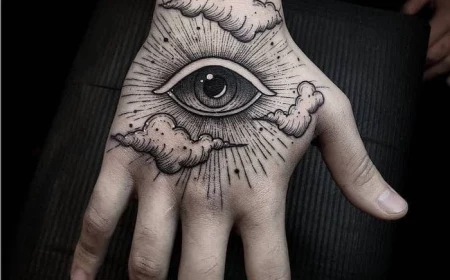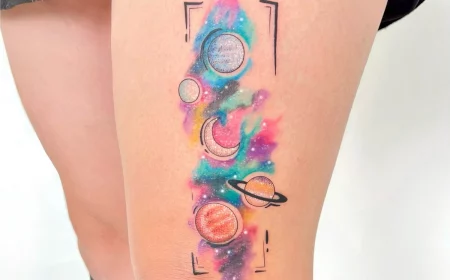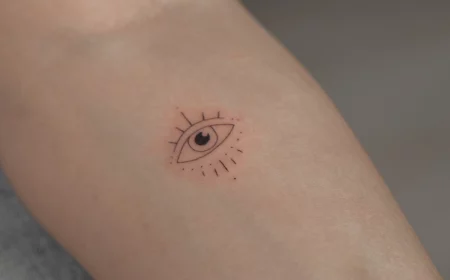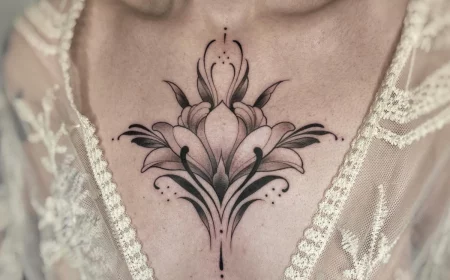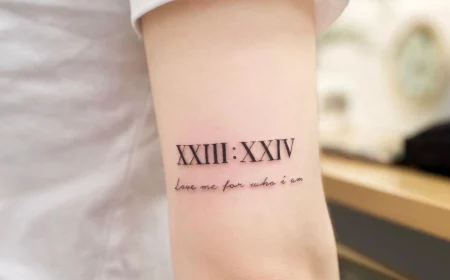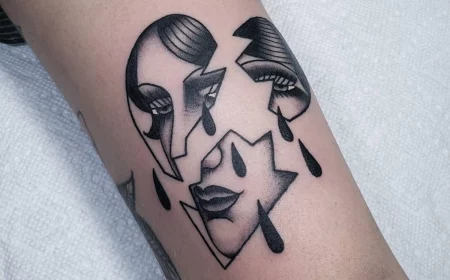Thinking About a Compass Tattoo? An Artist’s Honest Guide
Over my years in the tattoo world, I’ve seen countless trends come and go, but some designs just stick around. The compass is definitely one of them. I’ve probably put ink to skin on hundreds of these, from tiny arrows on a wrist to massive back pieces complete with old-world maps. People really connect with it, and for good reason. It’s more than just a picture of a sailor’s tool; it’s a powerful symbol of guidance, finding your way, and staying true to your path in life.
In this article
But let’s be real, a quick search online gives you a thousand pretty pictures and not much else. They show you the ‘what’ but almost never the ‘why’ or the ‘how.’ Nobody tells you how that super intricate design will look in five years, why putting it on your ribs might be a bad idea, or what separates a crisp, beautiful compass from a blurry, regrettable blob. That’s the real talk I want to have with you.
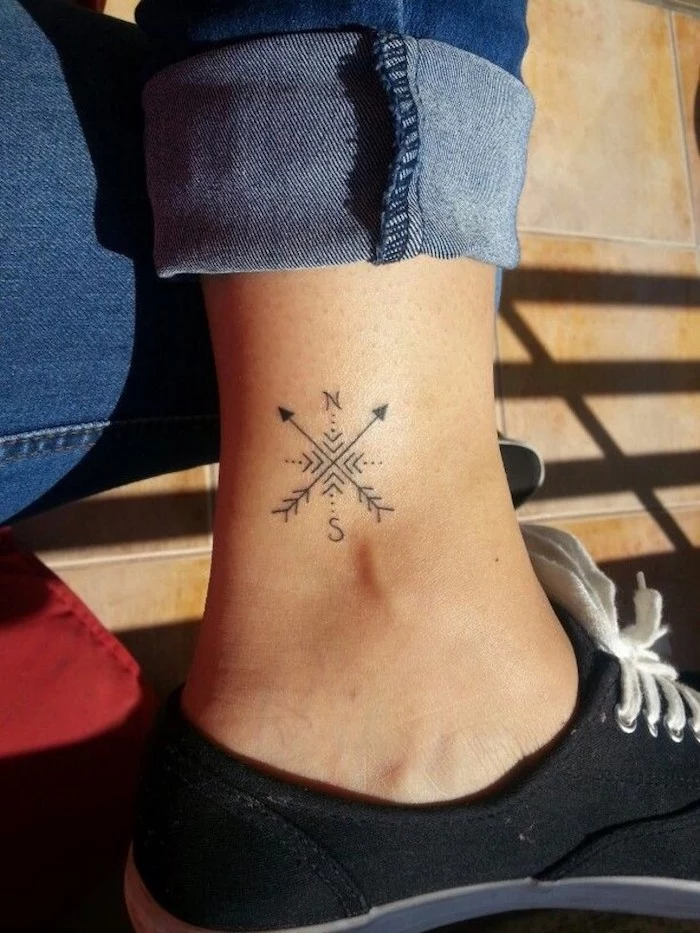
This isn’t about just picking a design from a gallery. It’s about understanding the craft behind the symbol so you can work with an artist to create something that’s not only meaningful but will also look amazing for decades to come.
First Things First: Your Skin is the Canvas
Before we even get into the cool artistic stuff, we have to talk about the medium itself. Your skin isn’t a flat sheet of paper; it’s a living, breathing organ that changes over time. Getting this part is crucial if you want a tattoo that lasts, especially for a design like a compass that depends on sharp, precise lines.
When we tattoo, we’re using needles to place ink into the dermis—that stable layer of skin just beneath the surface. The ink particles are too big for your immune system to just flush away, and that’s what makes the tattoo stick around. A compass design’s success really hinges on its linework. Those clean cardinal points (North, South, East, West) and that perfect circle are everything.
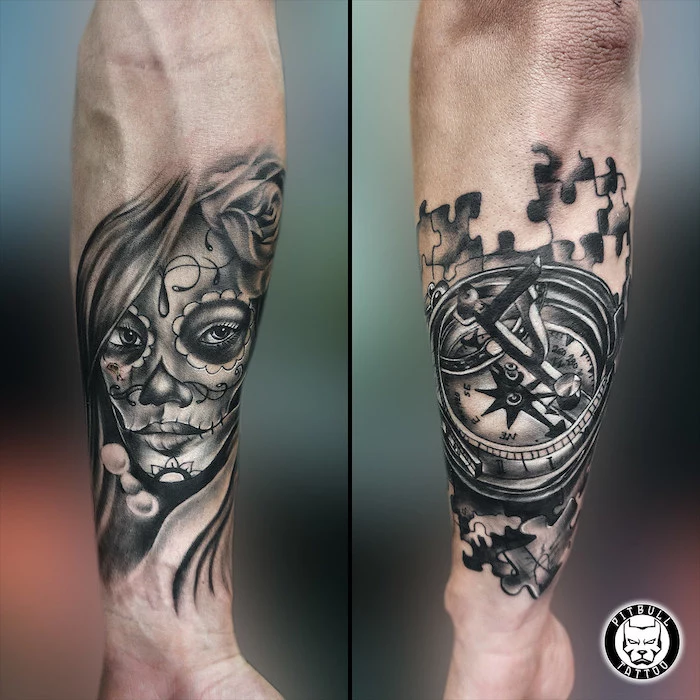
To get that crispness, an artist needs to nail what we call “needle depth.” Too shallow, and the ink ends up in the top layer of skin that sheds, leading to a faded, patchy tattoo almost right away. Too deep, and you get a “blowout.” That’s when ink spreads under the skin, creating a fuzzy, bruised-looking halo around the lines. Honestly, I’ve seen way too many compass tattoos ruined by blowouts, turning a sharp ‘N’ into a sad, blurry smudge. It’s usually a dead giveaway of an inexperienced or heavy-handed artist.
How Your Compass Tattoo Will Age (Because It Will)
Every single tattoo ages. It’s just a fact. Over the years, ink particles naturally spread out a tiny bit, and lines will thicken. A good artist knows this and designs for it. For a compass, this means we simply can’t make the details too tiny. Microscopic numbers or super delicate letters might look incredible on day one, but in ten years, they could easily become unreadable smudges.
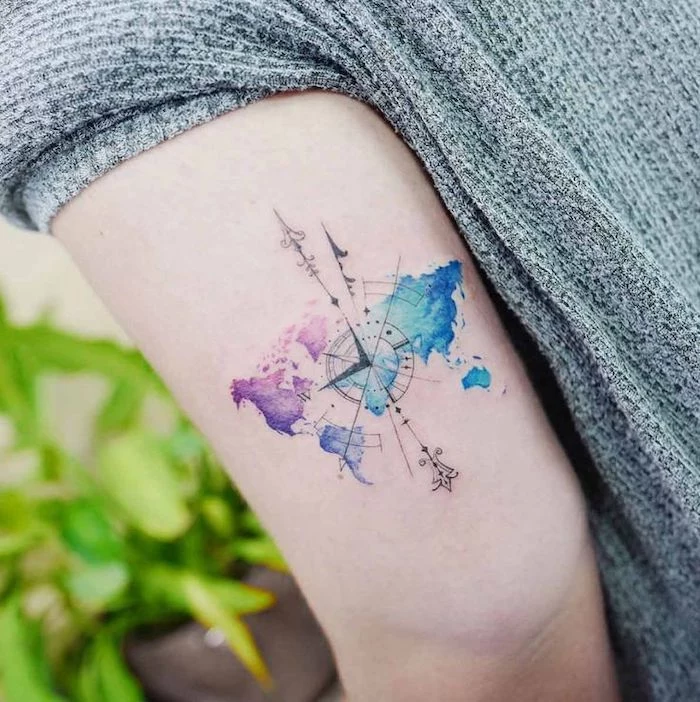
I always have a frank conversation with clients about finding that sweet spot between detail and durability. Sometimes, the best solution is to just go a little bigger with the overall design. This gives all those little details room to breathe and age gracefully without blurring into each other.
Oh yeah, and your skin type matters. A lot. Thinner skin, like on the inner wrist or over the ribs, is way more sensitive and prone to blowouts. It requires a much lighter touch. Thicker, tougher skin—like on an outer thigh or back—is more forgiving. This is a huge part of the consultation, where we figure out the best placement for your body and the design you want.
Quick tip: Be honest with yourself about pain. An outer forearm placement might be a 3/10 on the pain scale for most folks. The ribs? That can easily feel like an 8/10. It’s all doable, but it’s good to know what you’re signing up for. And always, ALWAYS eat a big meal before your appointment. It makes a world of difference.
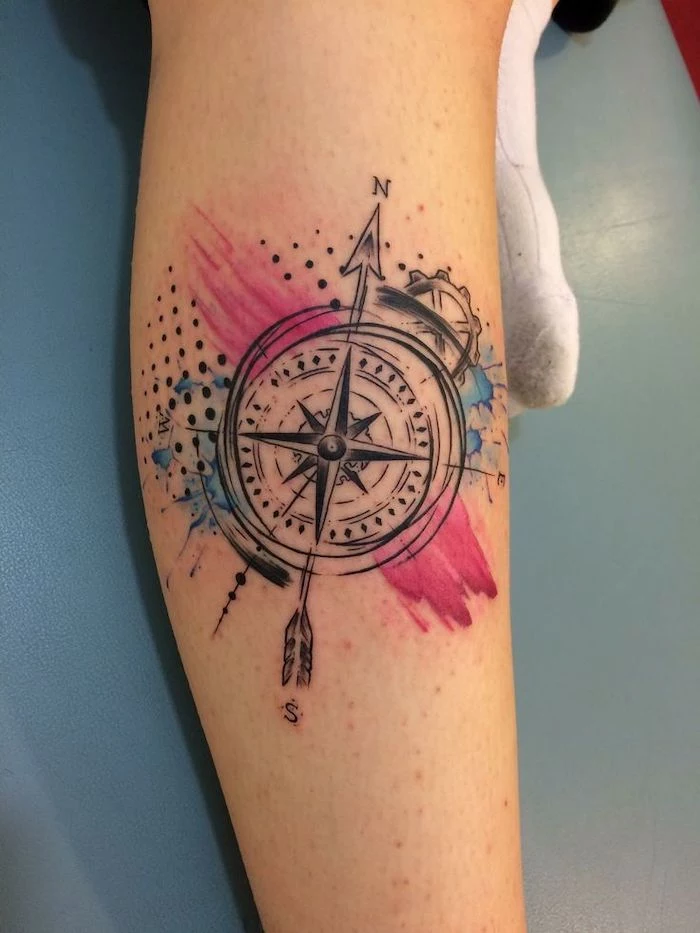
Styles and What They Really Mean for You
The style of your compass says a lot. Let’s break down the most popular choices, not just by looks, but by how they hold up and what they might cost you.
-
American Traditional: This is the classic. Think bold black outlines, a simple color scheme (usually reds, yellows, greens), and heavy black shading. These were designed to be tough and readable from a distance. Longevity: Excellent. They are built to last and age incredibly well. Cost: Generally a solid mid-range price. You’re paying for time-tested technique.
-
Minimalist & Fine-Line: These are all about clean, perfect lines. Often just the cardinal points or a simple compass rose. They look super elegant. Longevity: Good, but only if the work is flawless. There’s no shading to hide a shaky line, and if the lines are too fine, they can fade over time. Cost: Can be deceptive. While they might take less time, you’re paying for an artist’s extreme precision. A simple one might start at the shop minimum, usually around $150 to $300.
-
Watercolor: This style uses splashes and fades of color to mimic a painting. It’s beautiful and unique. Longevity: This is the trade-off. Without strong black outlines to hold everything in, watercolor tattoos are known to fade faster and may lose their shape over time. Be prepared for touch-ups every 5-10 years to keep the colors looking fresh. Cost: The initial cost can be high, and you have to factor in the potential cost of future touch-ups.
-
Dotwork/Stippling: This technique uses thousands of tiny dots to create shading, giving it a vintage, etched look. Longevity: Fantastic. Dotwork ages beautifully, softening gently without losing its texture. Cost: Can be on the higher end because it is incredibly time-consuming and requires immense patience from the artist.
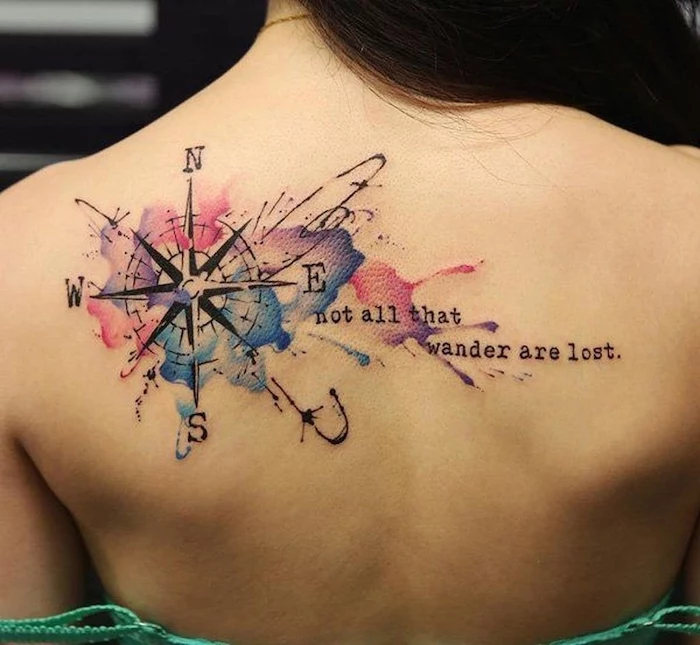
Getting it Done Right: From Idea to Ink
A great tattoo is a team effort. It starts with a clear idea and an even clearer line of communication with your artist. Here’s how to navigate the process like a pro.
Finding Your Artist & Making First Contact
Before you can have a consultation, you need to find the right person. A great place to start is Instagram. Search for hashtags like
[yourcity]tattoo (for example,
seattletattoo or #austintattooartist). But don’t just look at the fresh photos! Look for artists who post pictures of their work HEALED. Fresh tattoos can be misleading; healed work shows the artist’s true skill.
Once you find an artist you love, you’ll need to send an inquiry. To save everyone time and get a quicker response, here’s what to include in your first email or contact form:
- Your Idea: Clearly state you want a compass tattoo and mention the style you’re leaning towards (e.g., “a minimalist compass with some dotwork shading”).
- Size & Placement: Be specific. Say “about 4 inches tall on my inner forearm,” not just “a small one on my arm.”
- Reference Photos: Attach a few images you like, but always say you’re open to the artist creating something custom for you.
- Your Budget (Optional but helpful): If you have a budget, it’s good to mention it. It helps the artist know if they should suggest a simpler design or if they have the freedom to create a more complex piece.
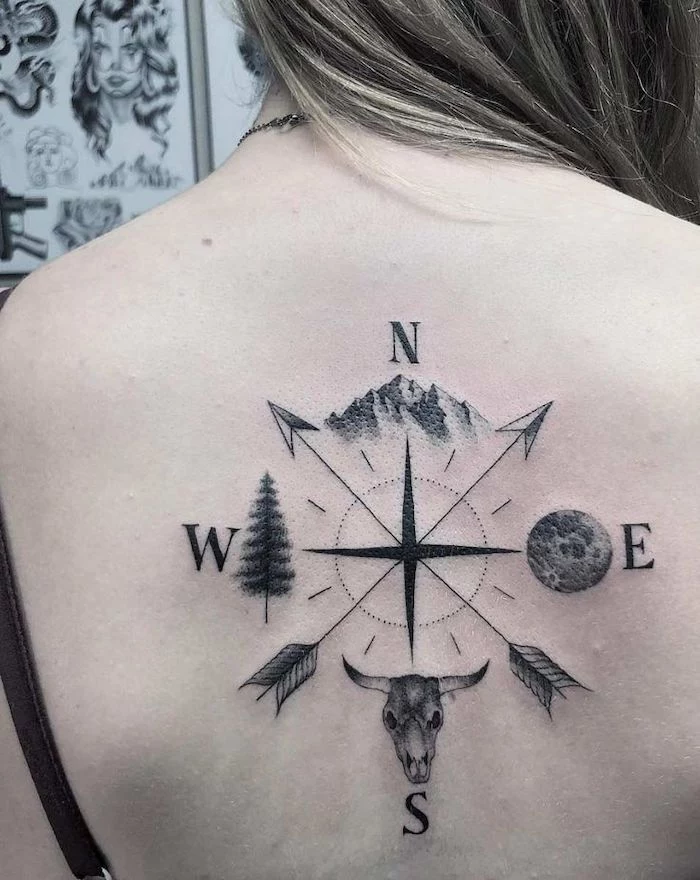
The Consultation & What to Expect
During the consultation, we’ll talk about what the compass means to you, nail down the style, and measure the placement. A good artist will tell you if your idea needs tweaking to work better as a tattoo. For example, that super long quote you want might need to be shortened, or the font enlarged, to stay readable for years.
We’ll also talk money. Be prepared for this conversation. Prices vary wildly based on artist skill, location, and complexity, but to give you a ballpark… a simple, quarter-sized minimalist compass might fall into the shop’s minimum price range, which is often $150 to $300. A more detailed, palm-sized piece with intricate shading could easily be $500 to $900 and take 3-4 hours. A big, complex piece could be a full-day session or more, running well over $1,000. This isn’t just for the ink; it’s for the artist’s expertise and a safe, sterile procedure.
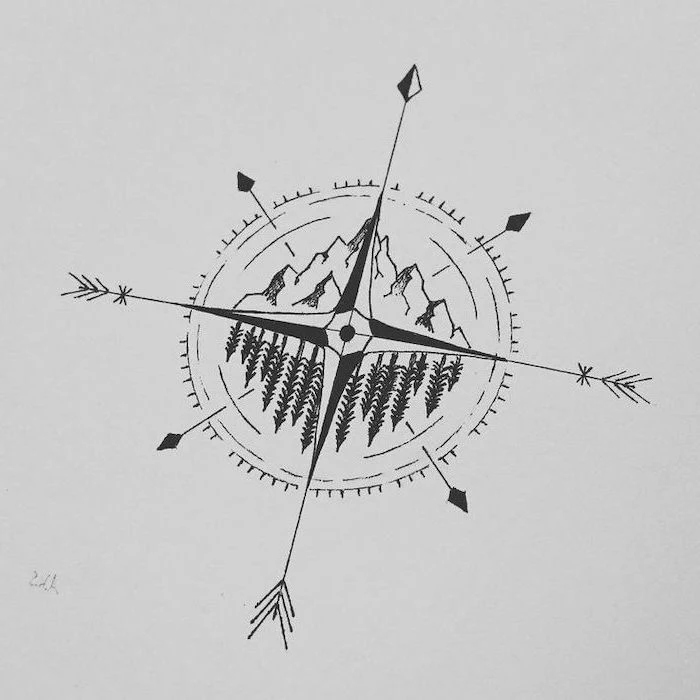
Heads up! Here are a few common mistakes I see clients make:
- Insisting on tiny text. I promise you, it will blur. Trust your artist when they suggest making it bigger.
- Being rigid about placement. We might suggest moving a design an inch to the left to avoid a bone or to make it flow better with your muscles. Be open to it!
- Asking for an exact copy. Reputable artists will not copy another’s custom work. Use images for inspiration, not for duplication.
Aftercare: Your Job Begins When You Leave the Shop
Once that tattoo is done, it’s your turn. Proper aftercare is non-negotiable for a good result. Your artist will give you specific instructions, but here are the universal basics.
For the first few days, you have an open wound. Keep it clean. Gently wash it 2-3 times a day with a mild, fragrance-free soap (unscented Dial Gold is a classic for a reason) and pat it dry with a clean paper towel. Then apply a VERY thin layer of ointment. Don’t smother it! A thin sheen of something like Aquaphor or a dedicated tattoo balm like Hustle Butter is all you need.
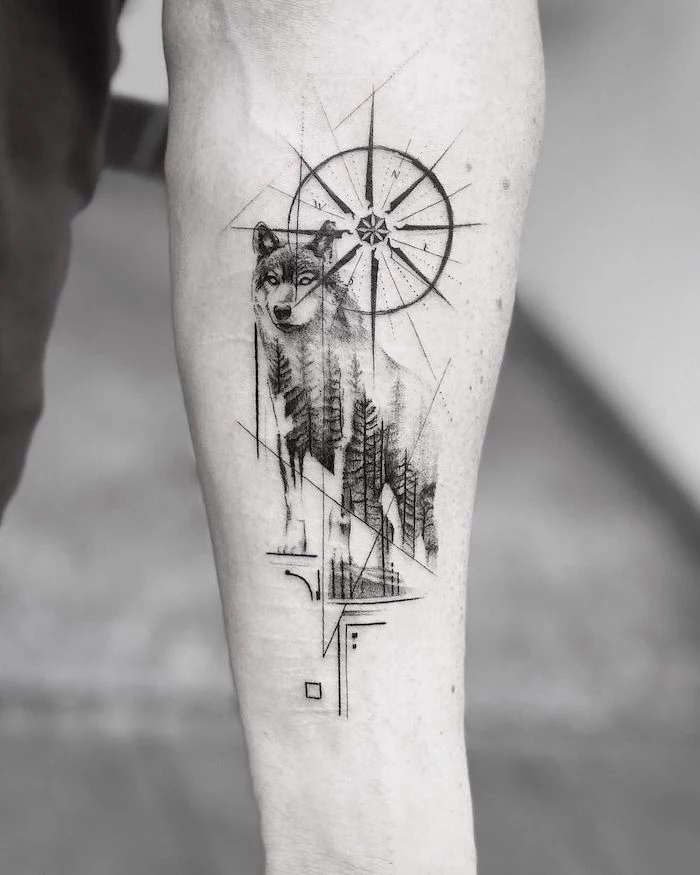
After a few days, it’ll start to peel and itch like a sunburn. Don’t you dare pick or scratch it. This is the time to switch from an ointment to a simple, unscented lotion to keep it moisturized. The whole surface healing takes about 2-4 weeks, but it can take months for the skin to fully settle underneath.
And for the rest of your life? The sun is the number one enemy of your tattoo. UV rays break down ink and fade your art, especially those precious fine lines. If you want your compass to stay sharp for the long haul, make high-SPF sunscreen your best friend. Your investment is worth protecting.
Inspiration Gallery
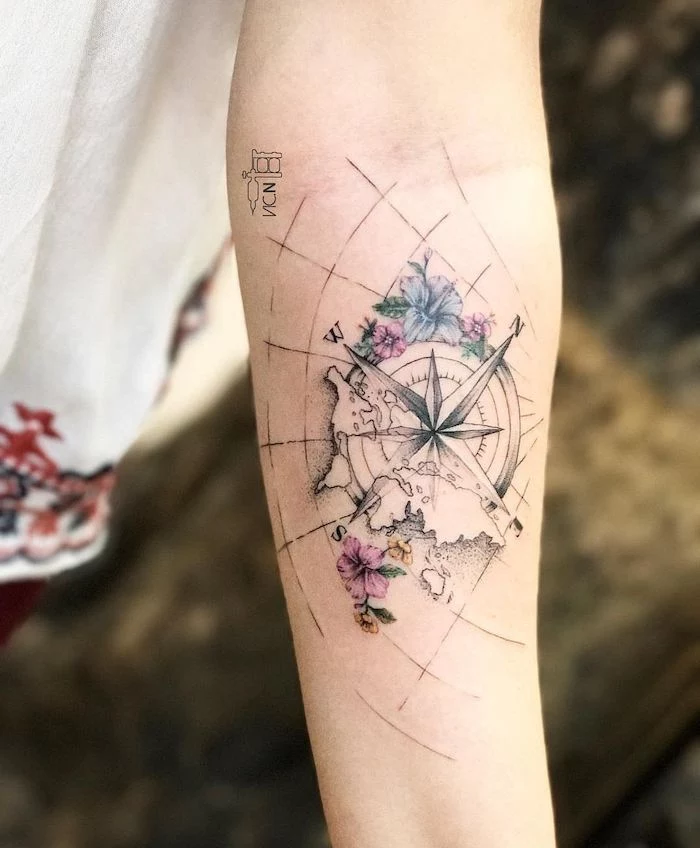
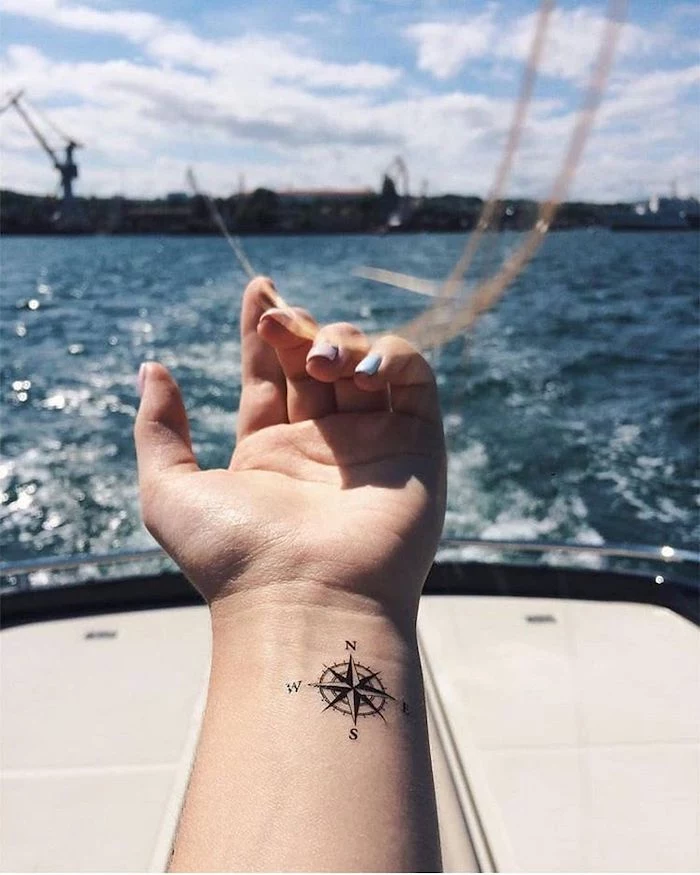

- Keep the area clean with a gentle, fragrance-free soap.
- Apply a very thin layer of a specialized aftercare product, like Hustle Butter Deluxe or a simple Bepanthen cream.
- Avoid soaking the tattoo in baths or pools for at least two weeks.
The secret to crisp lines that last? Meticulous aftercare during the first month. Your artist does the hard work, but the healing is up to you.
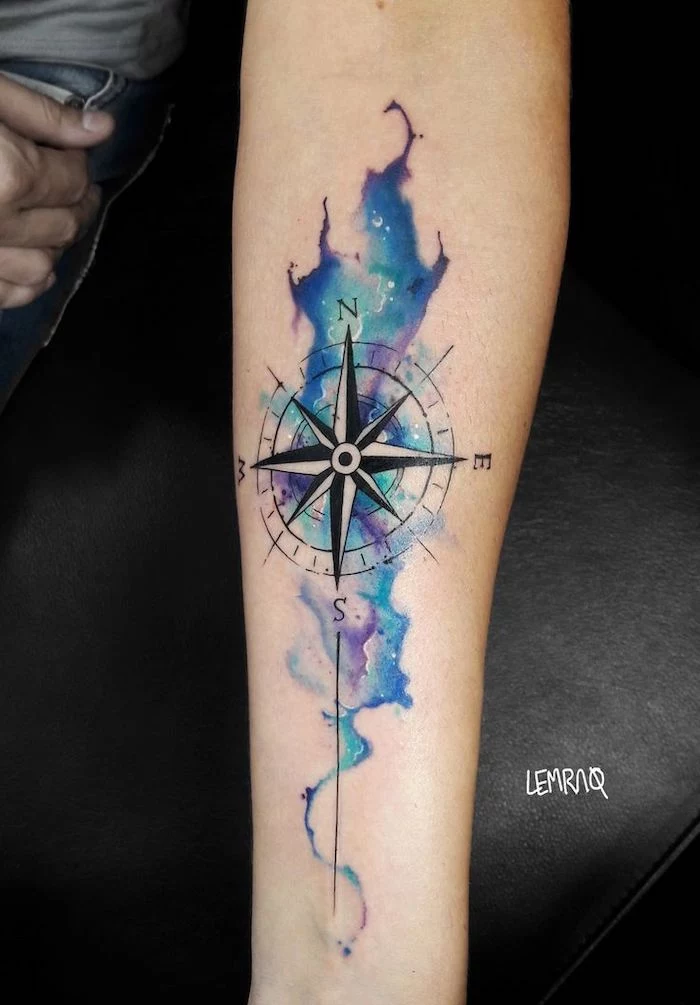
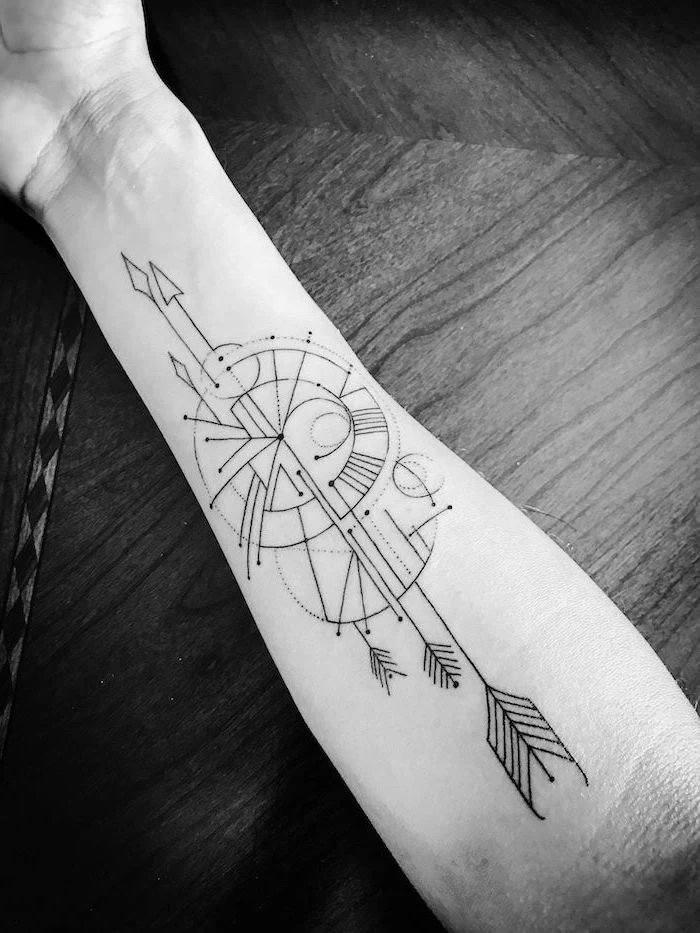
Vintage Maritime Style: Characterized by thicker, bold lines, classic typography for N, S, E, W, and often shaded with simple black and grey. It evokes the golden age of sail and exploration.
Modern Minimalist Style: Focuses on ultra-fine lines, often just arrows or a simple circle. It’s subtle, elegant, and perfect for smaller placements like the wrist or behind the ear.
The choice depends on whether you want a statement piece with historical weight or a discreet personal symbol.
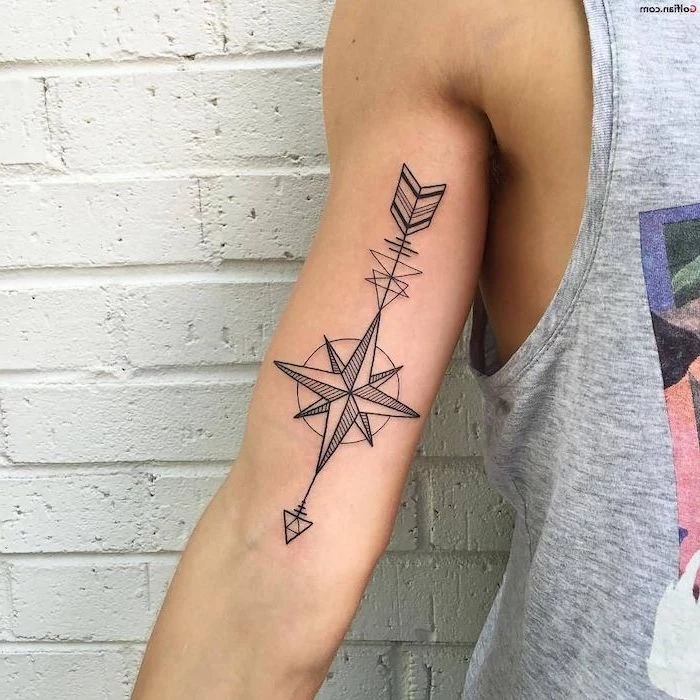
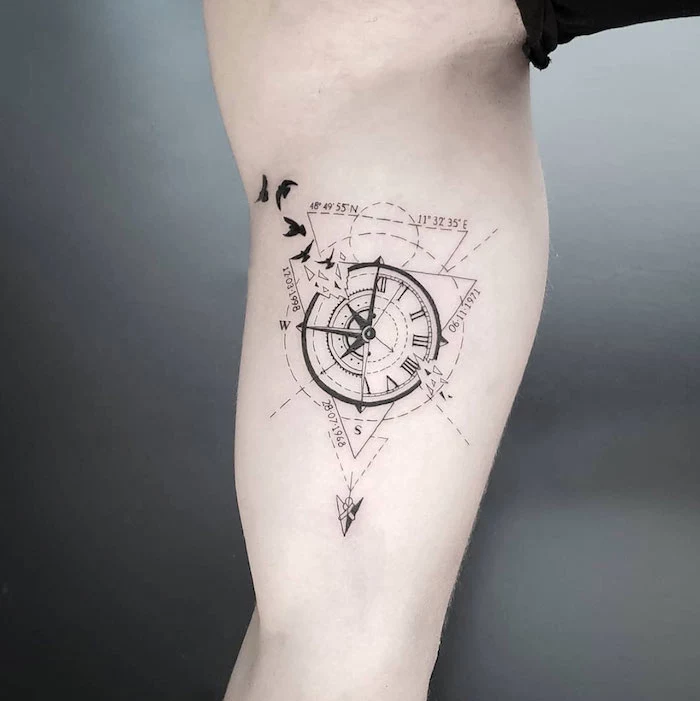
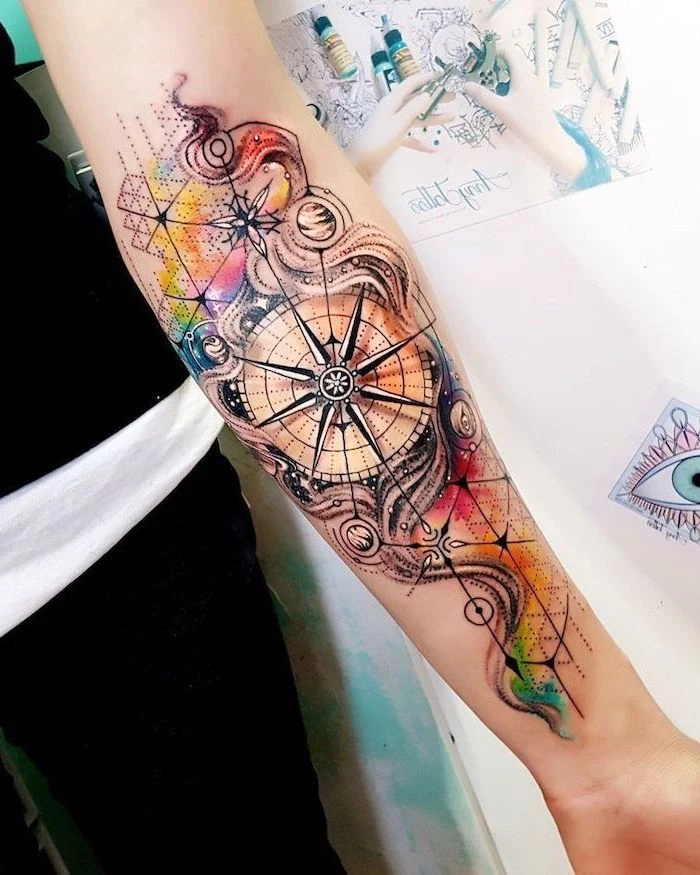
The first compasses didn’t have a needle. They used a piece of lodestone, a naturally magnetized mineral, floated on a piece of wood in a bowl of water to find north.
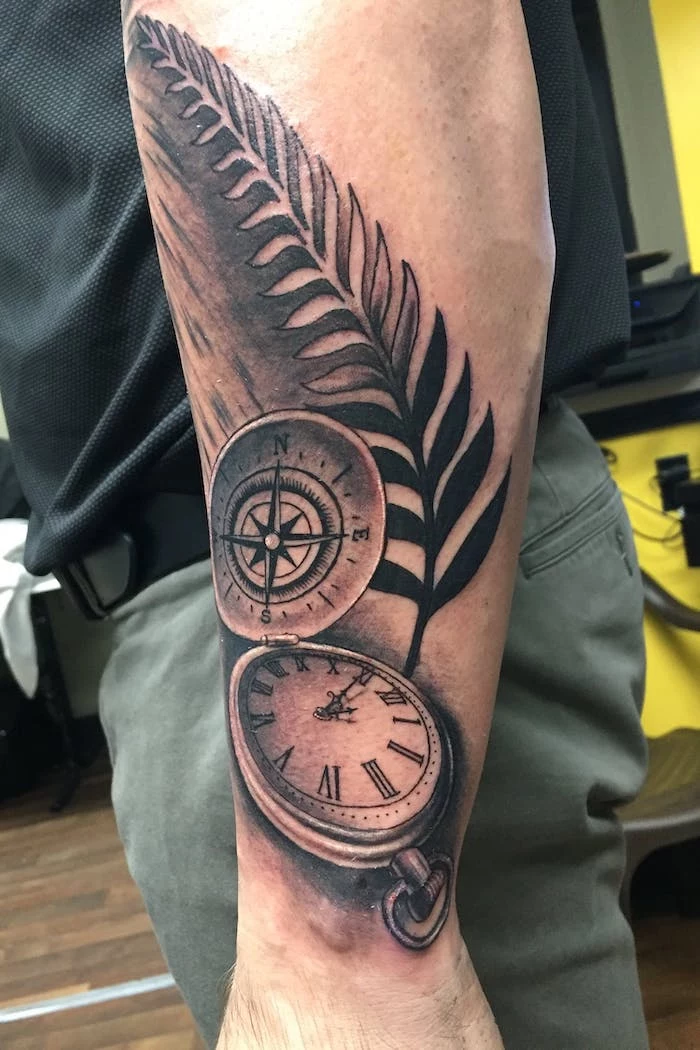
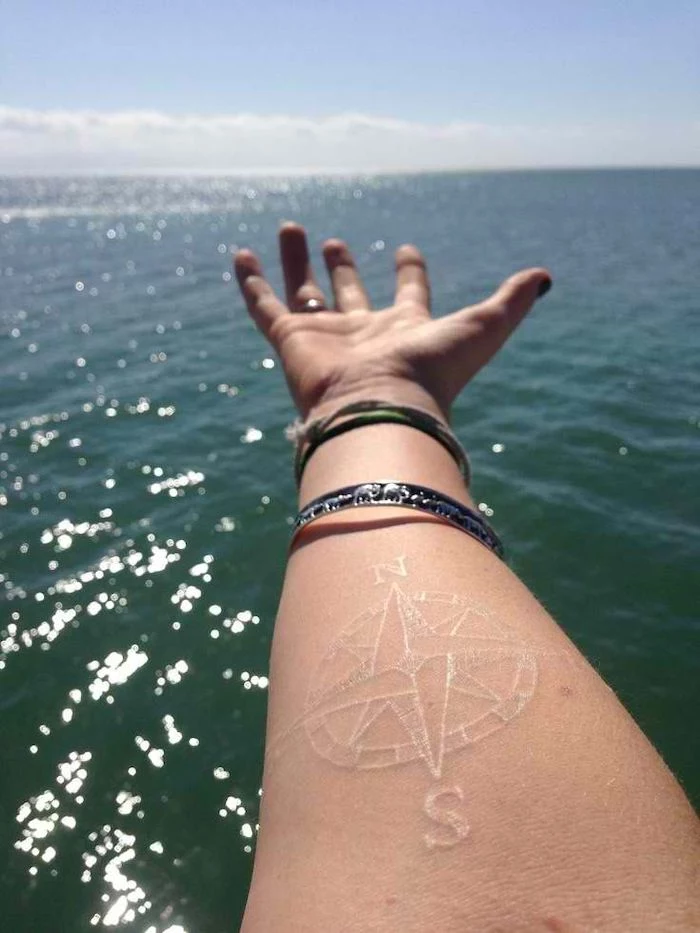
Watercolor tattoos are incredibly popular for compass designs, giving them a fluid, artistic feel. But be aware: this style relies on soft edges and color blends. To ensure it doesn’t become a colorful smudge over time, it’s crucial to choose an artist who is a master of this technique. Look for healed examples in their portfolio, not just fresh ones. A strong black-line structure within the watercolor splash will give it the foundation it needs to age gracefully.
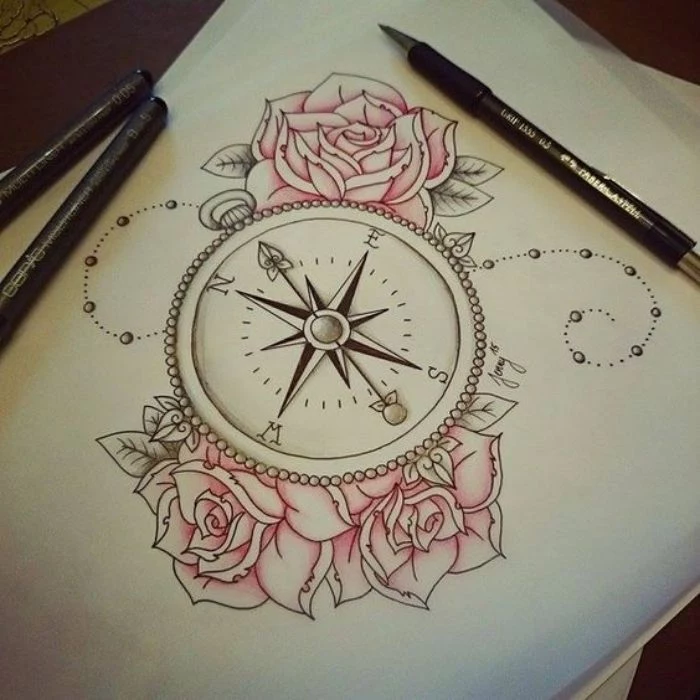

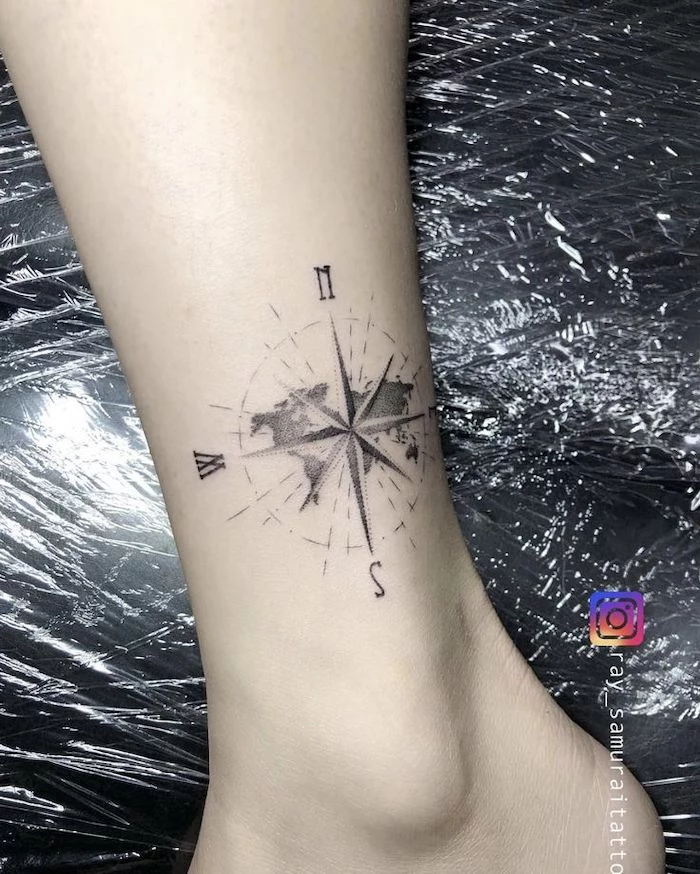
A common pitfall: Overloading a small compass with tiny details. A world map, intricate filigree, and a lengthy quote crammed into a 2-inch circle might look amazing on the stencil, but ink spreads under the skin over years. Those delicate details will blur together. For smaller tattoos, embrace simplicity. Let the symbol speak for itself.
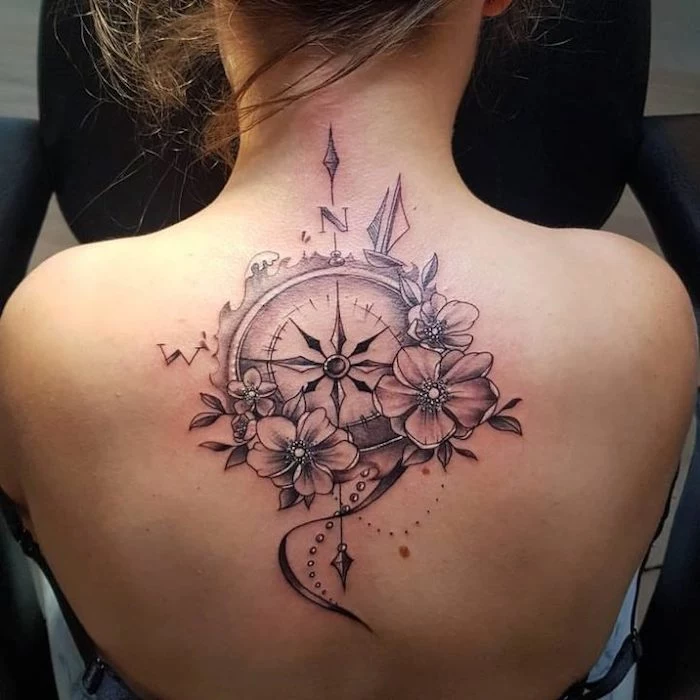
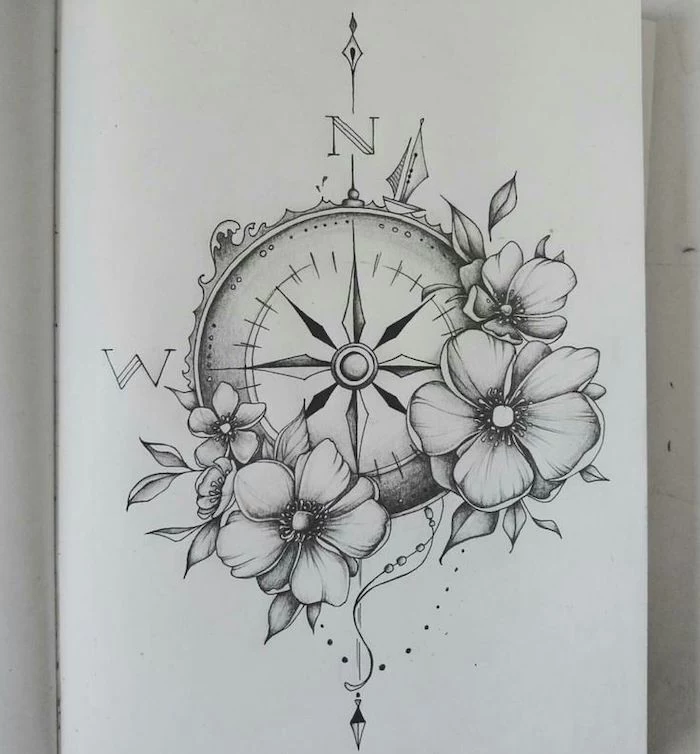
Can I incorporate coordinates into my compass tattoo?
Absolutely! It’s a fantastic way to personalize the design. Clients often choose the coordinates of their birthplace, where they met a partner, a favorite travel spot, or a location that represents a personal achievement. Just be sure to double-check the coordinates for accuracy. A good artist can integrate the numbers elegantly along the compass arrows or around the circular border.
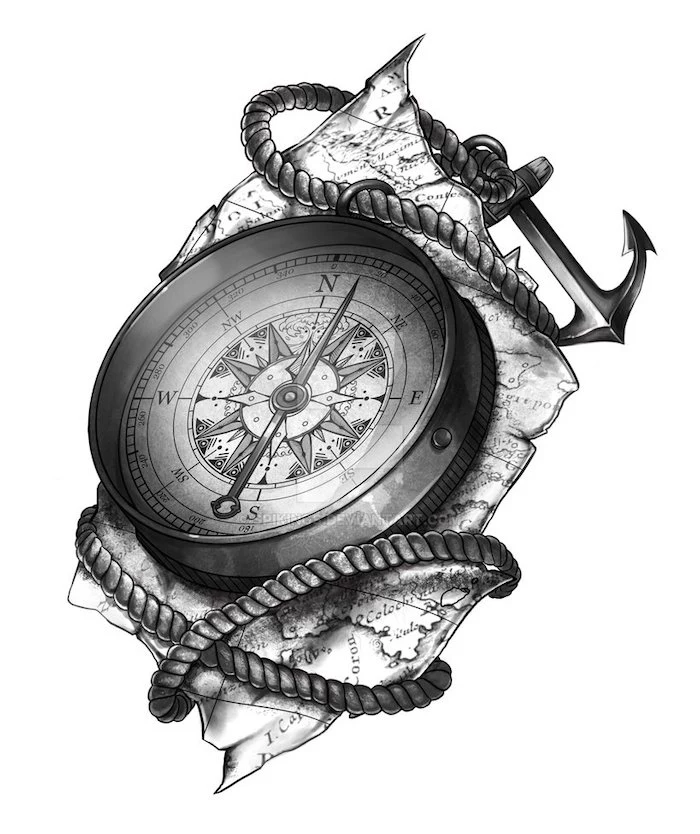
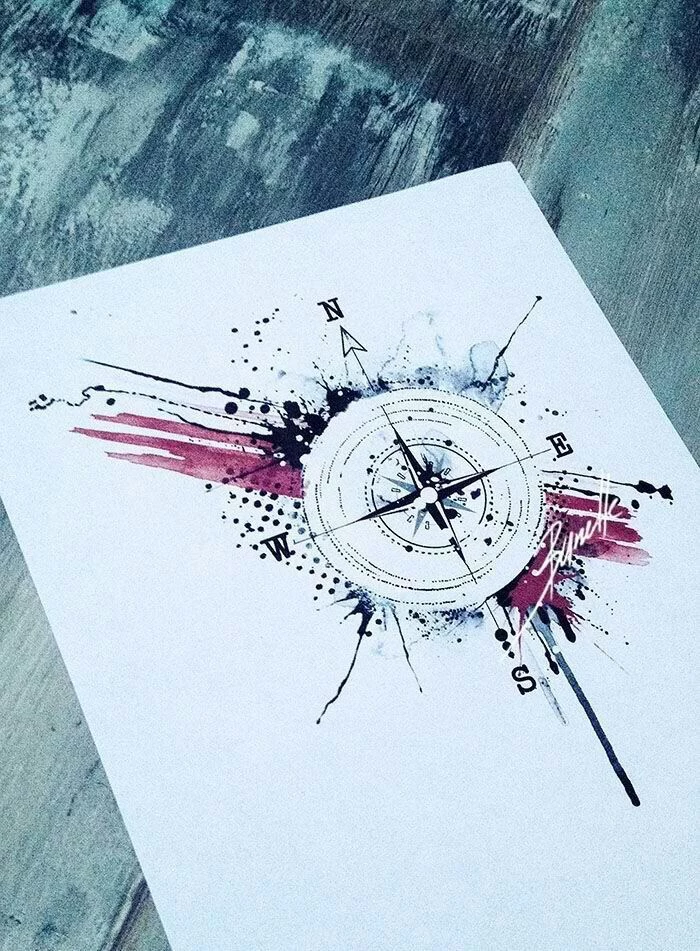
A 2012 study found that regret was most common for tattoos chosen hastily at a young age. The most-cited reason? The tattoo no longer reflects who they are.
This is why the compass endures. Its symbolism—guidance, purpose, and finding one’s own path—is universal and tends to remain relevant throughout life’s changes, making it a design you’re less likely to outgrow.
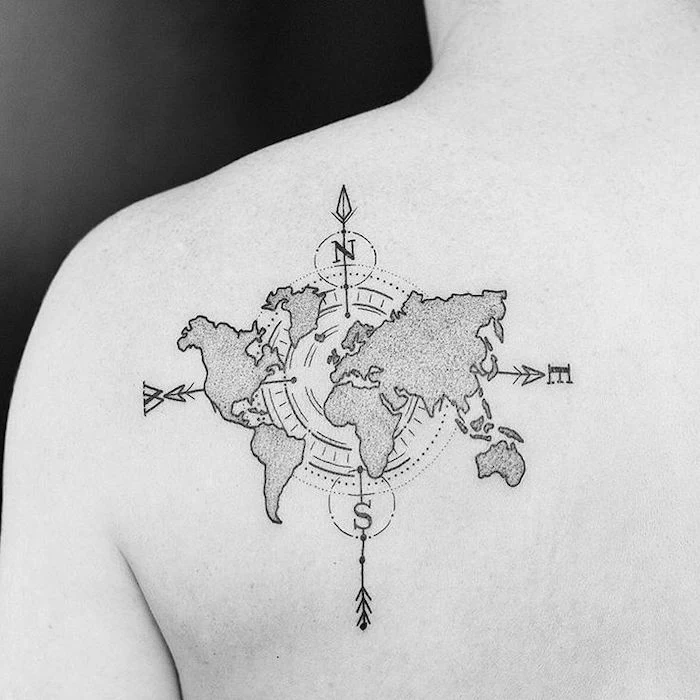
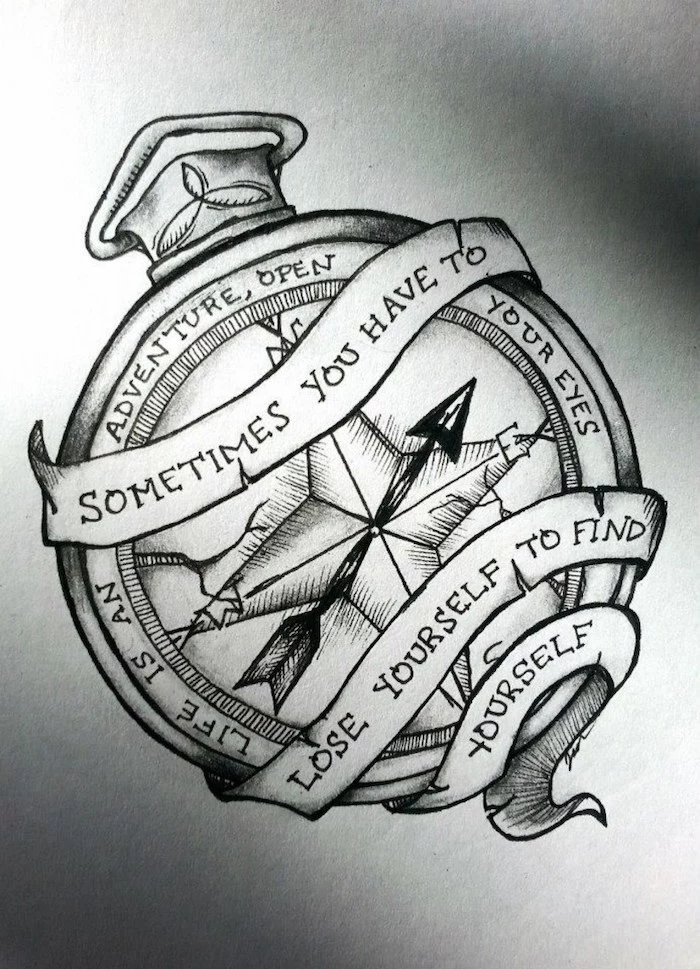
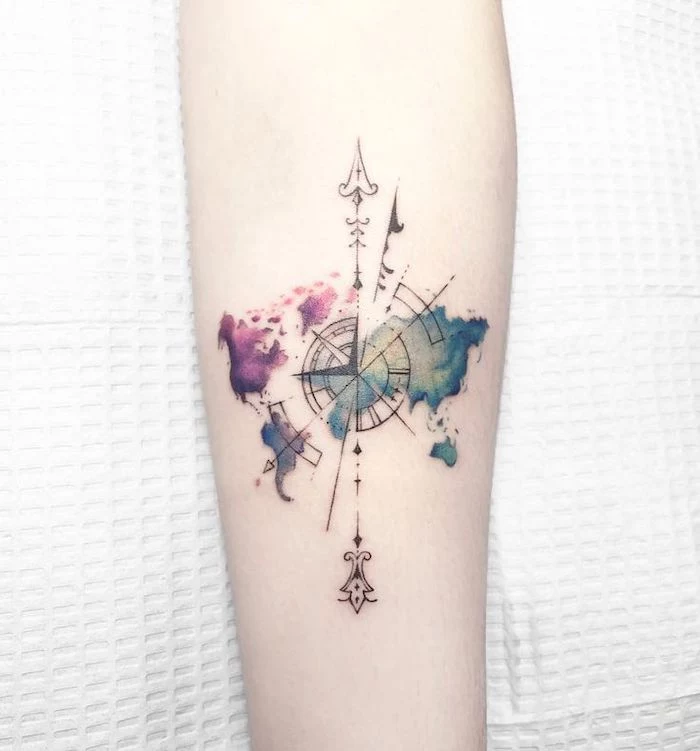
The Vegvísir, often called the Norse or Viking compass, is a popular and powerful alternative. It’s an Icelandic magical stave intended to help the bearer find their way through rough weather. Unlike a magnetic compass, its meaning is mystical: ‘If this sign is carried, one will never lose one’s way in storms or bad weather, even when the way is not known.’ It’s a symbol of spiritual guidance and protection.

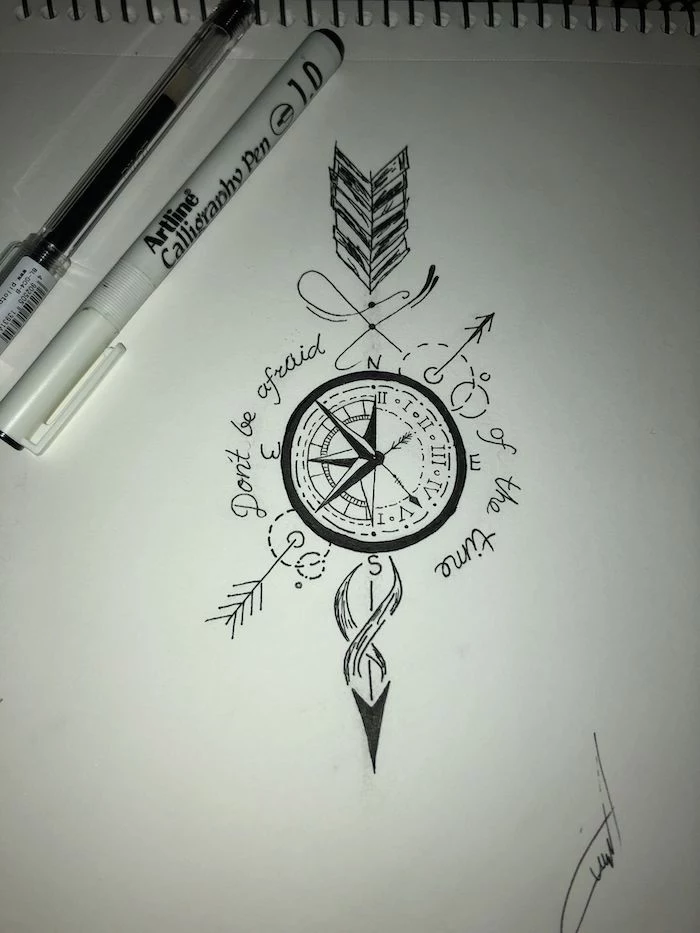
- The artist’s experience and reputation.
- The size and complexity of the design.
- The placement on the body (some areas are harder to tattoo).
- The time it takes to complete.
A simple, fist-sized compass might take an hour or two, while a large, intricate back piece with a map and other elements could require multiple full-day sessions.
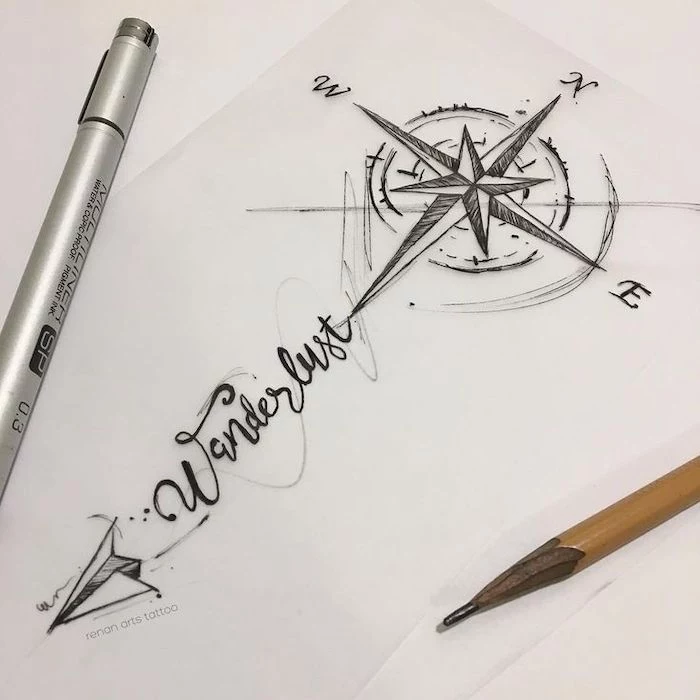
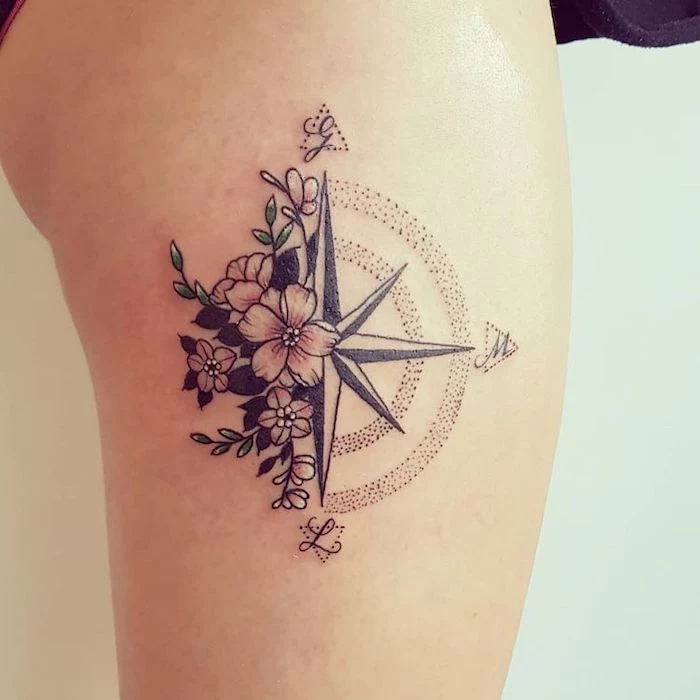
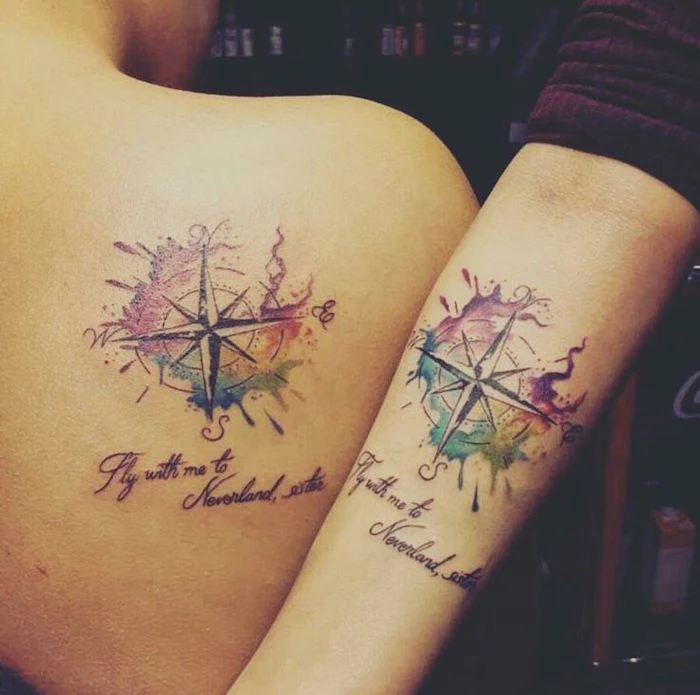
Before you even talk to an artist, create a mood board. Don’t just collect pictures of other compass tattoos. Gather images that evoke the feeling you want: old maps, photos of a place that’s meaningful to you, textures like wood grain or ocean waves, and color palettes you love. This gives your artist a much richer sense of your vision than a single reference photo ever could.
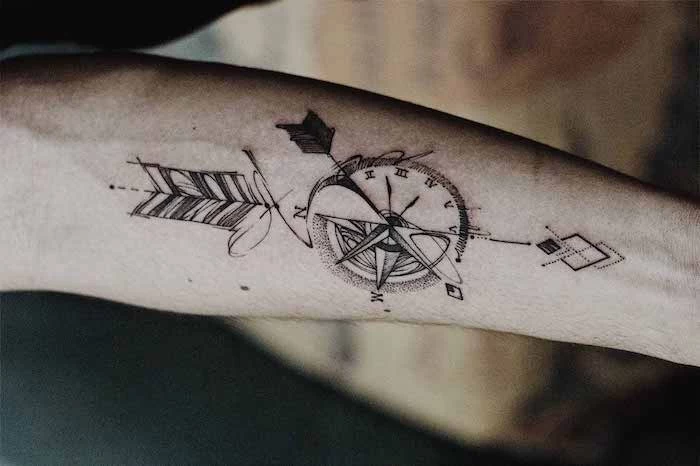
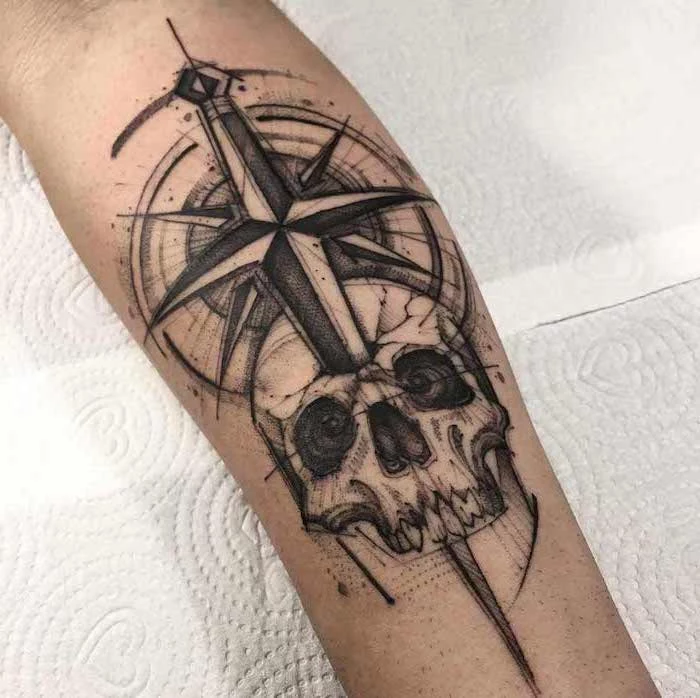
The question of color: While many compasses are done in black and grey, adding color can introduce another layer of meaning. Blue can represent the sea and sky for a traveler, green can symbolize nature and new beginnings, and a splash of red on the North arrow adds a classic, vibrant touch. Discuss color longevity with your artist; some pigments, like yellows and light blues, may fade faster and require more diligent sun protection.
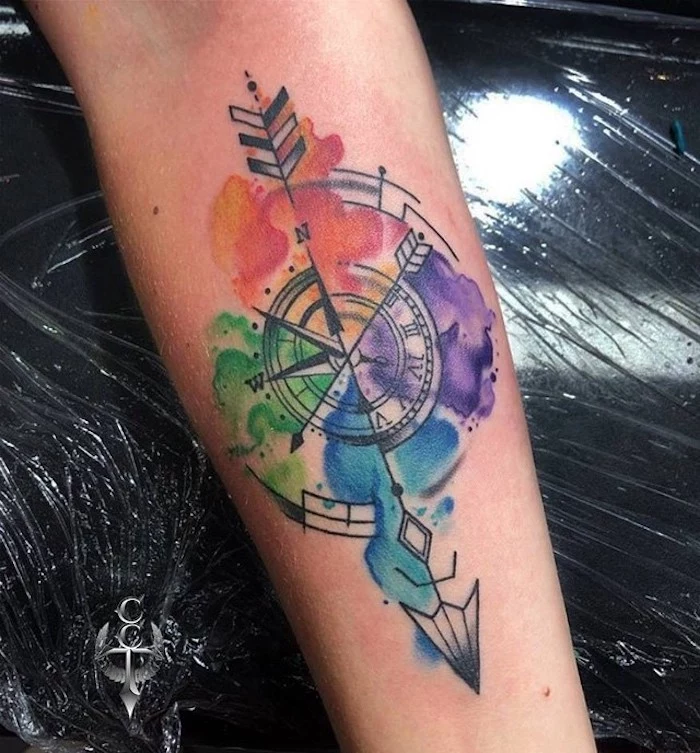
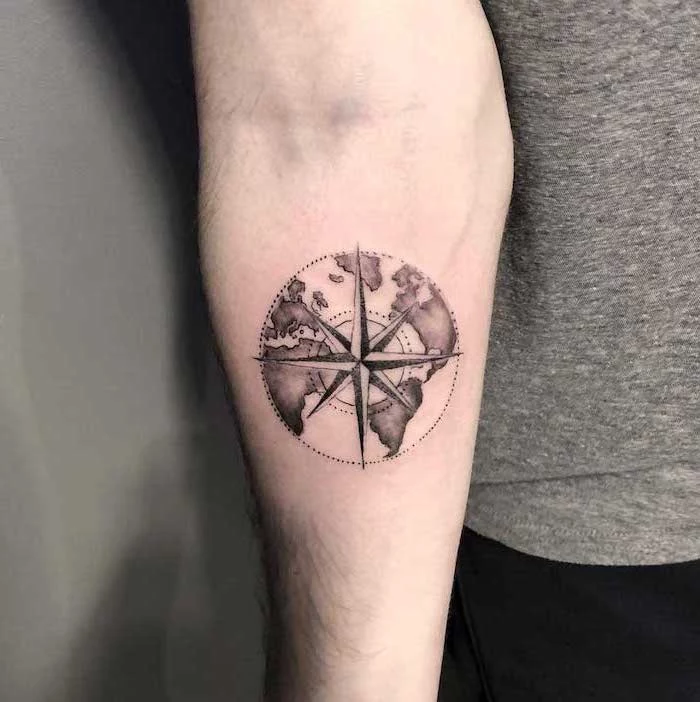
- Look for clean, consistent, single-pass lines. Are they sharp or wobbly?
- Check their healed work. Portfolios are full of fresh tattoos, but healed photos show the artist’s true skill.
- See if they have experience with perfect circles—a surprisingly difficult shape to tattoo flawlessly.
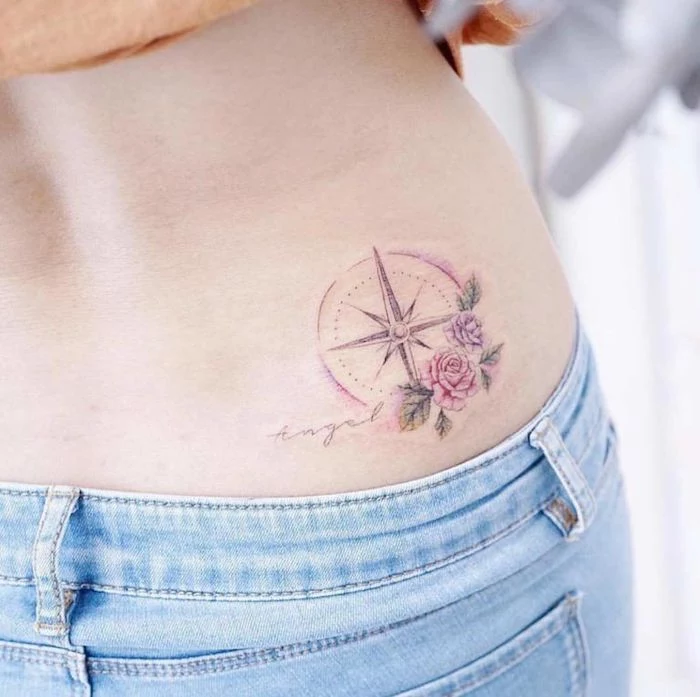

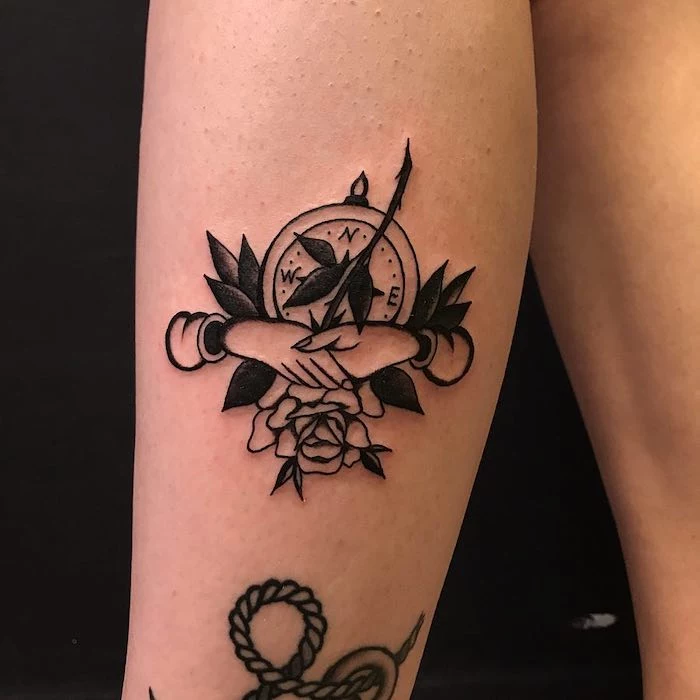
Not ready for a permanent commitment?
You can test-drive your idea. Brands like Inkbox offer semi-permanent tattoos that last 1-2 weeks. You can upload your own custom compass design or choose from theirs. It’s a great way to experiment with placement and size, helping you feel 100% confident before you go for the real thing.
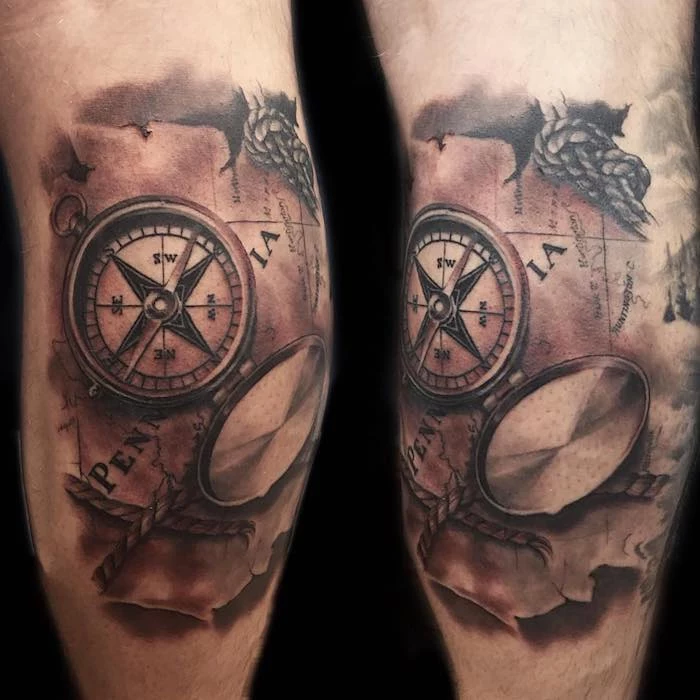

- It adds a deeply personal and often secret meaning.
- It anchors the universal symbol of the compass to a specific point in your life.
- It’s a conversation starter that lets you tell a unique story.
The trick? Using the coordinates of a place that truly defines your ‘true north.’
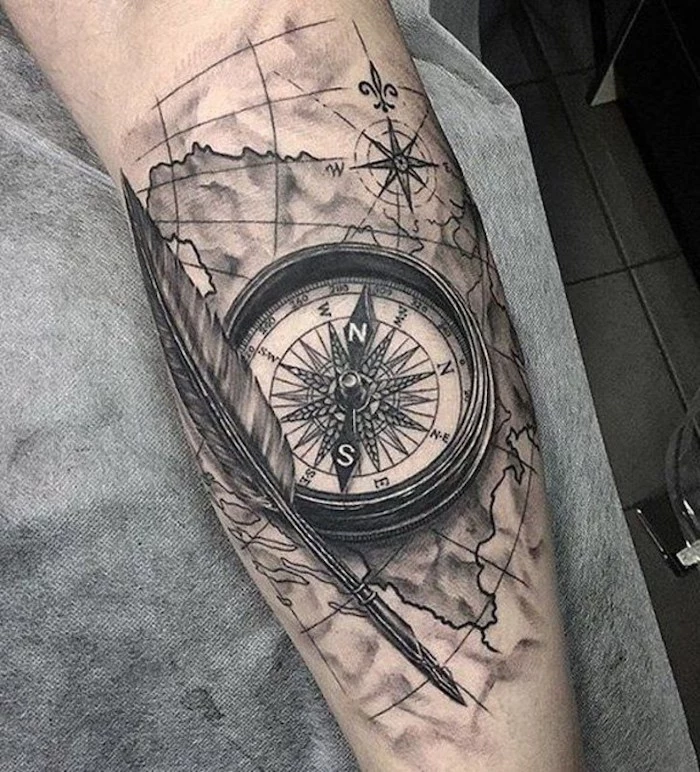
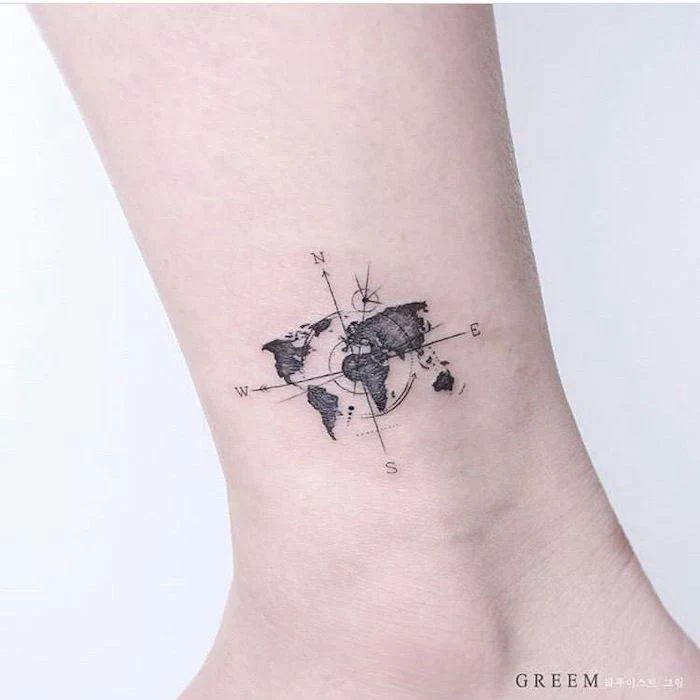
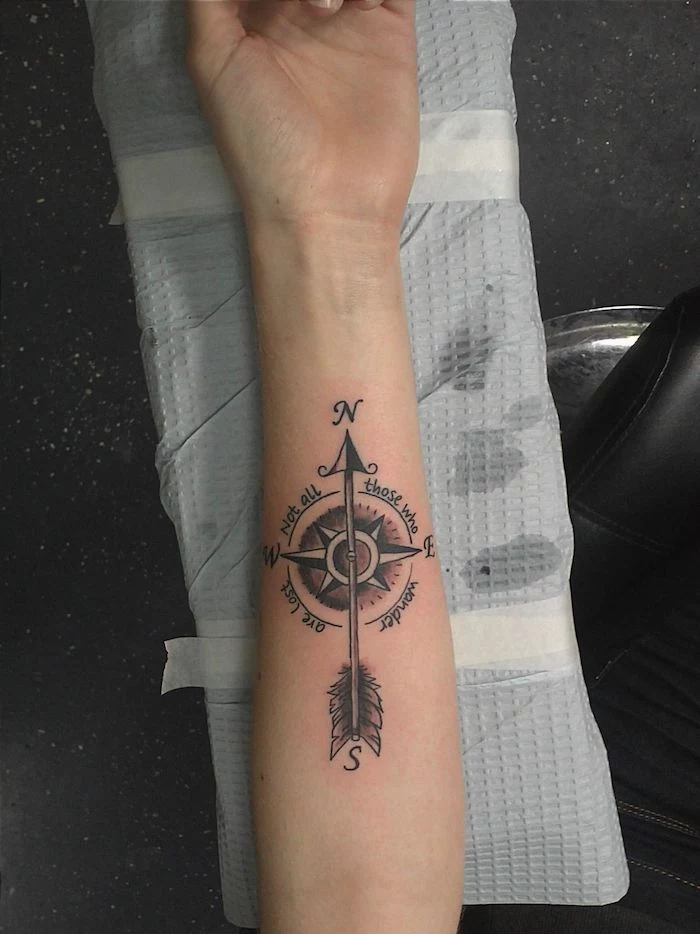
Don’t overlook the power of white ink in a compass design. While not ideal for a full outline, it can be used for stunning, subtle highlights on the compass rose or to create a ‘stark’ effect against darker shading. It can also be used for a full, minimalist tattoo, but be aware that white ink tattoos have a unique healing process and can yellow over time with sun exposure. They are best suited for pale skin tones and require an artist with specific experience in using it.
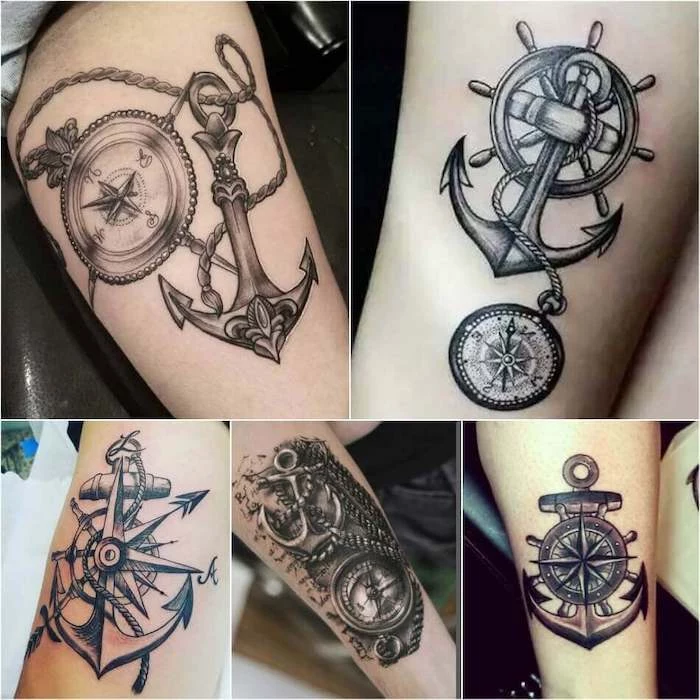
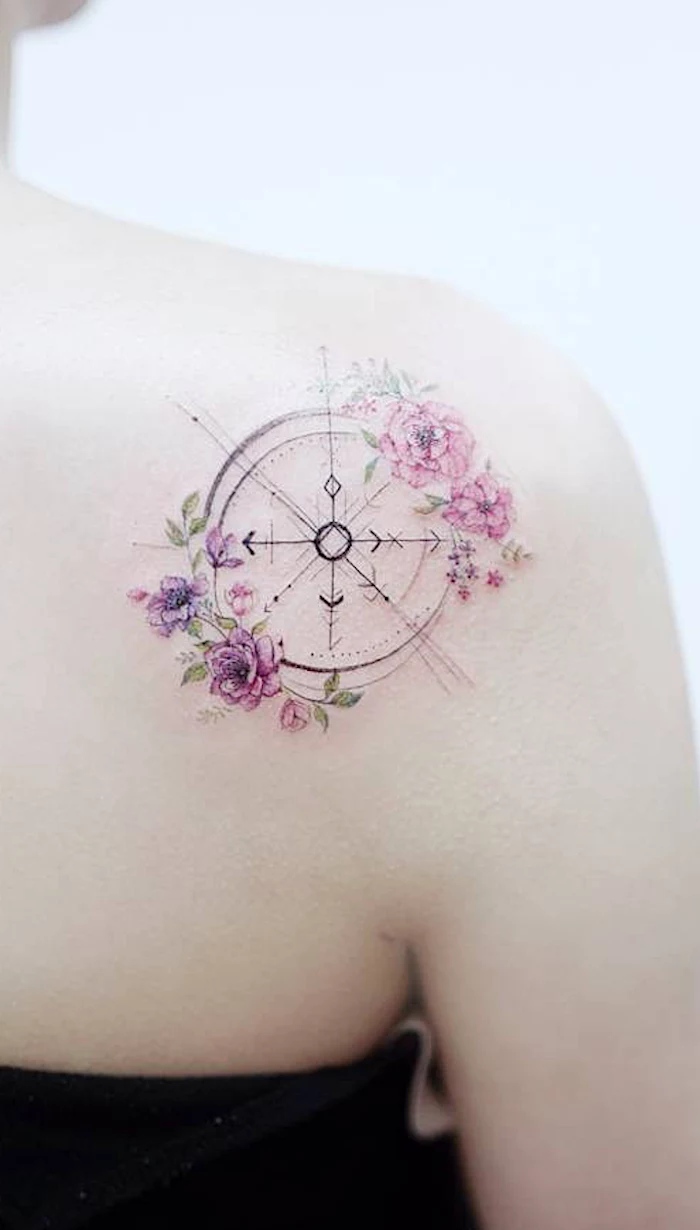
UV radiation from the sun is the number one cause of tattoo fading and degradation. It breaks down the ink pigments in the dermis, causing lines to blur and colors to dull over time.
Your best defense is a high-SPF sunscreen. Once your tattoo is fully healed, make applying sunscreen a daily habit on any exposed ink. Products like EltaMD UV Clear are non-greasy and perfect for everyday protection.
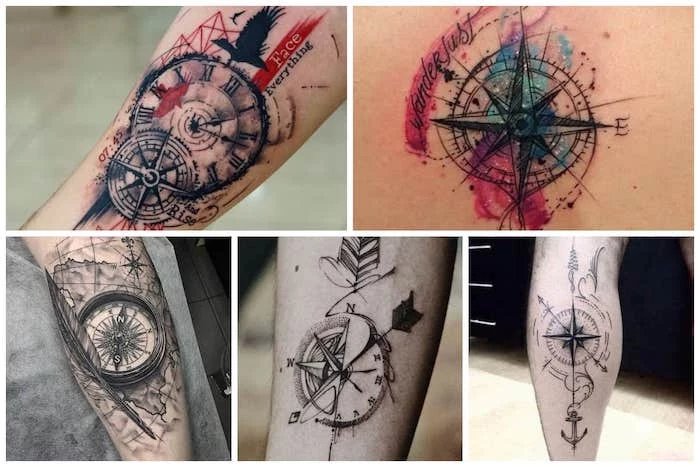
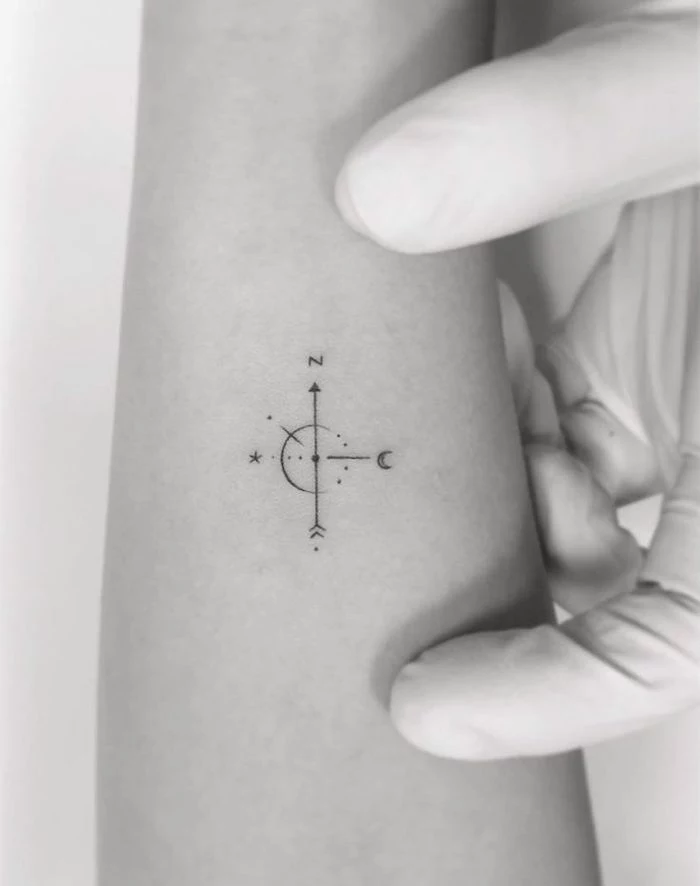
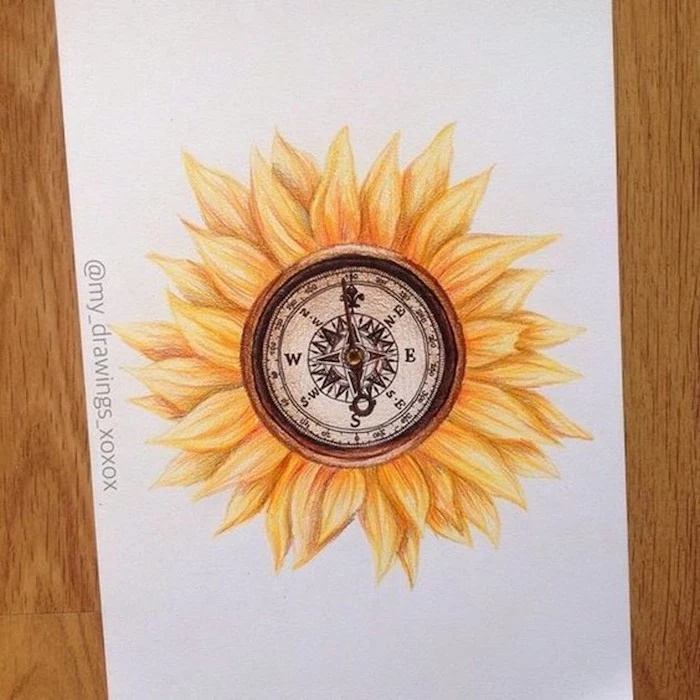
Forearm: The undisputed champion for compass placement. It offers a flat, stable canvas, is easy to see, and has relatively low pain levels. An inner forearm compass faces you, a constant personal reminder. An outer forearm placement is more of a public statement.
Ribs/Torso: A more painful spot, but it allows for larger, more intricate designs that can wrap around the body. It’s a placement that is more private and revealed by choice.
Consider your daily life and pain tolerance when choosing.
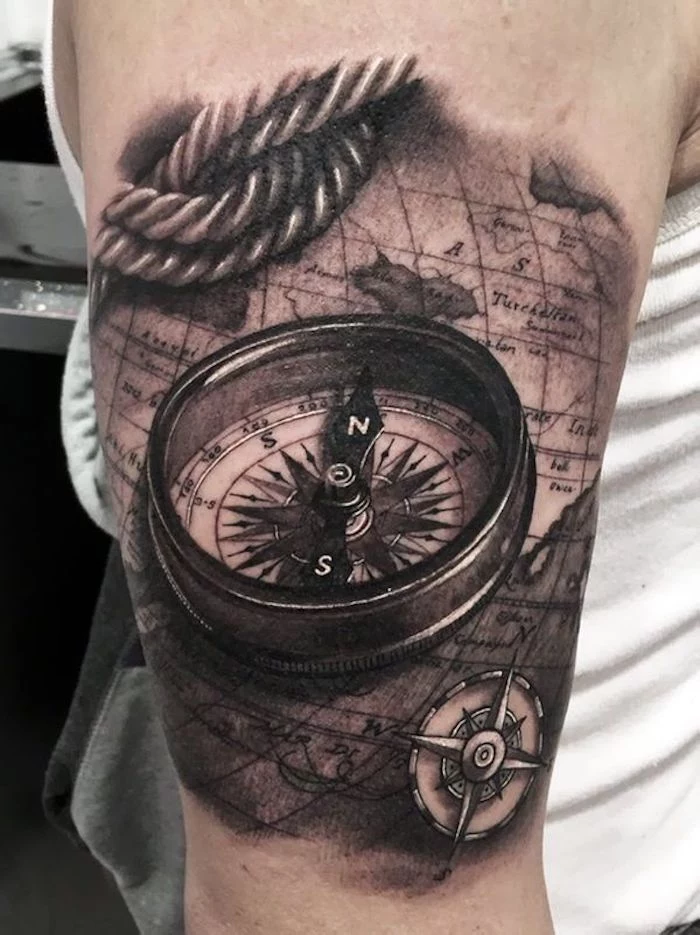
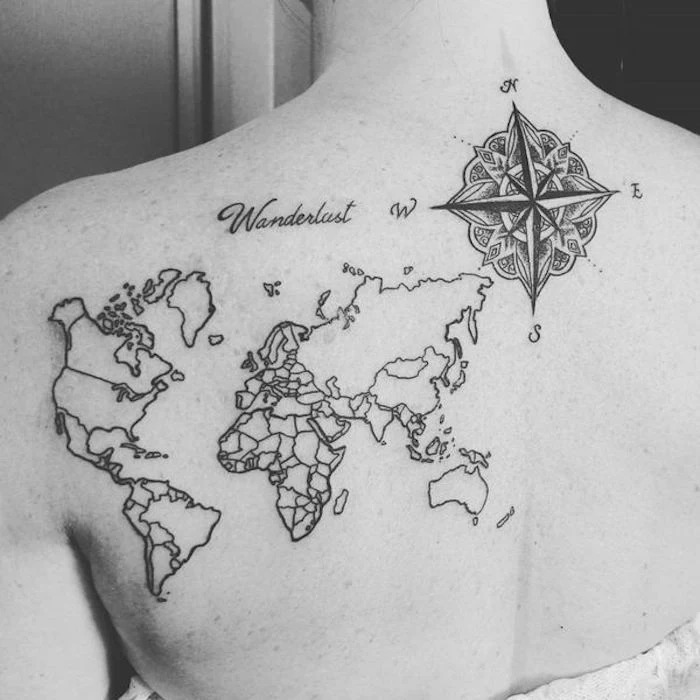
The arrow is a core component of many compass tattoos, representing not just direction but also purpose, forward momentum, and focus. A single arrow can signify moving on from the past, while crossed arrows can represent a meaningful friendship or partnership. The design of the fletching (the feathers at the back) and the arrowhead can also be customized to add personal flair, from traditional to ornamental styles.
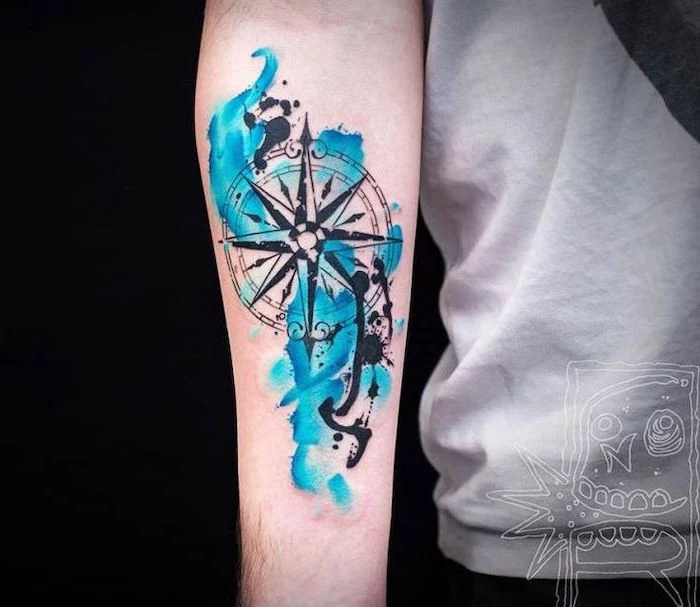
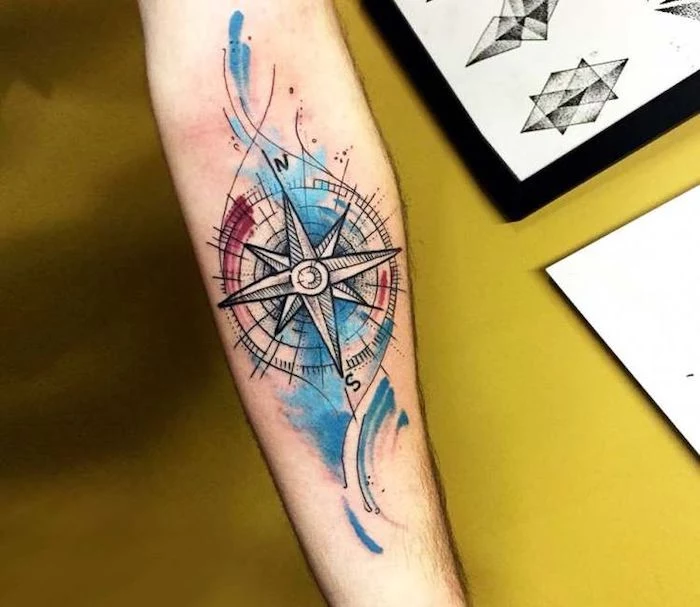
What’s the difference between a compass rose and a nautical star?
While both are maritime symbols of guidance, a compass rose displays the cardinal directions (N, S, E, W) and is a tool for navigation. A nautical star, with its five points split into two colors, was a symbol for sailors to find their way home, representing the North Star. One is about the journey (compass), the other about the destination (star).
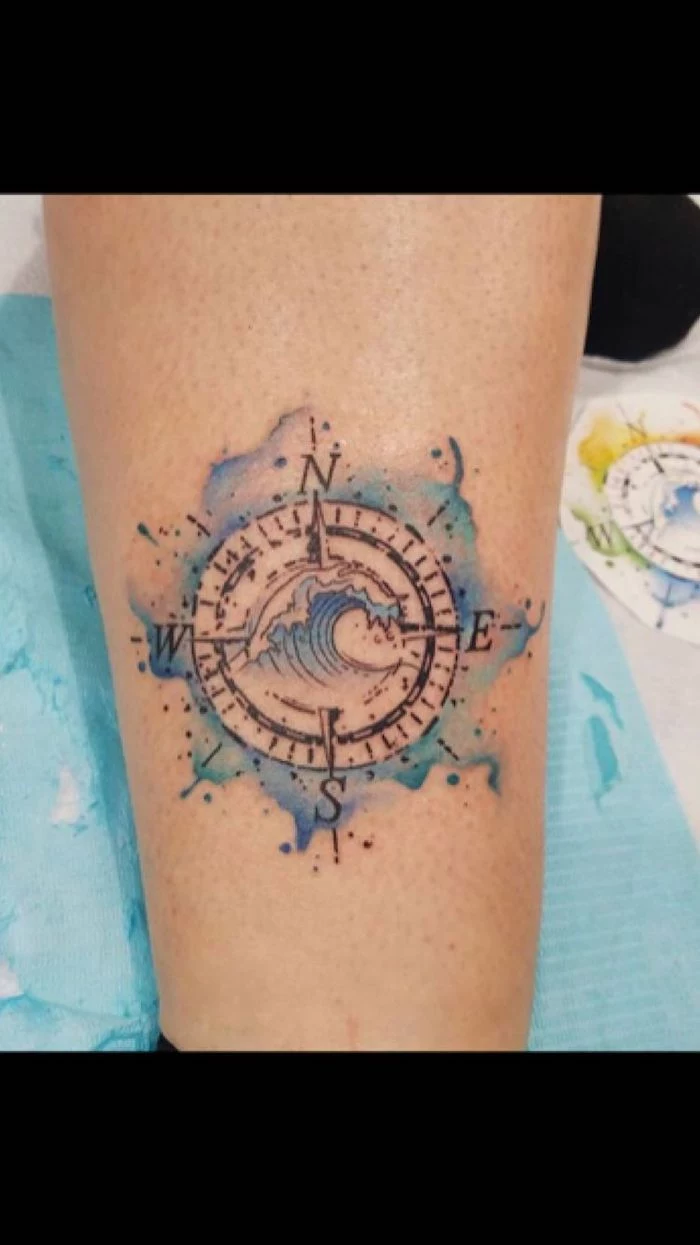
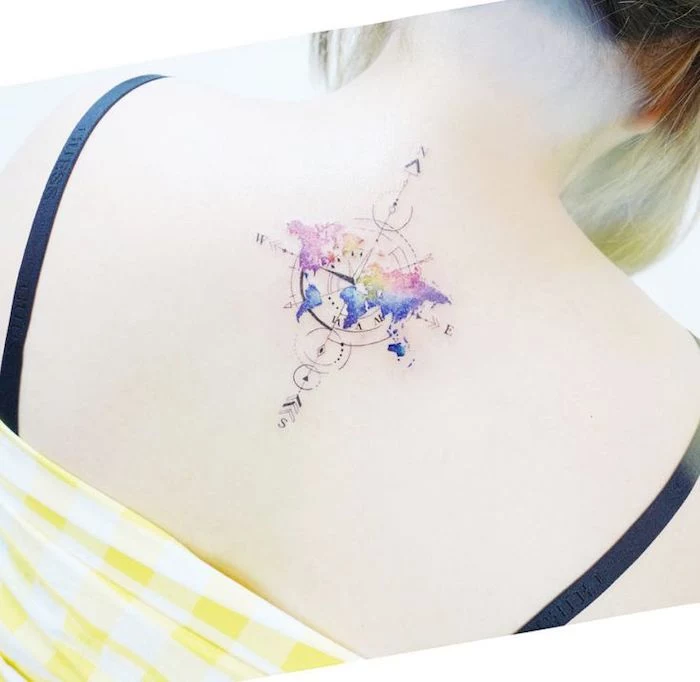
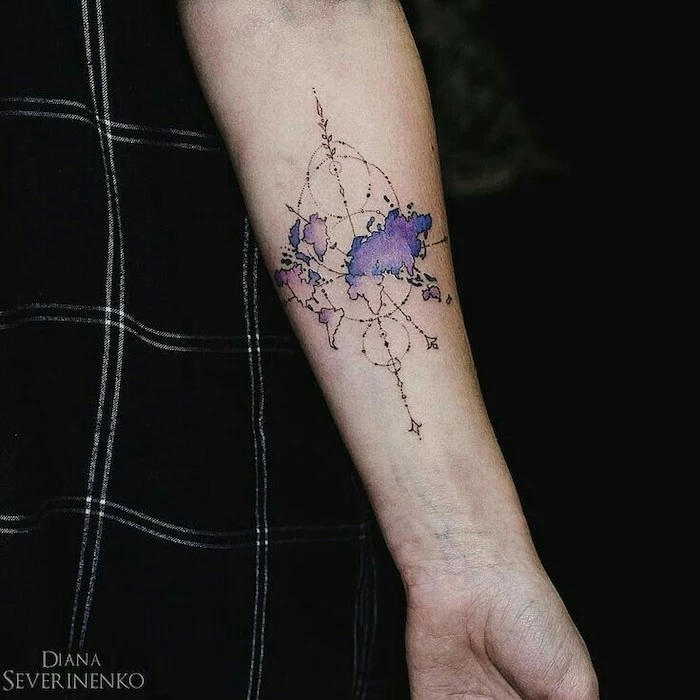
A compass doesn’t always have to point North. Some people intentionally have the needle point toward a direction that holds personal significance—the direction of their hometown, a place they dream of visiting, or metaphorically toward a life goal. It’s a subtle customization that makes the design uniquely yours, turning a universal symbol into a personal map.
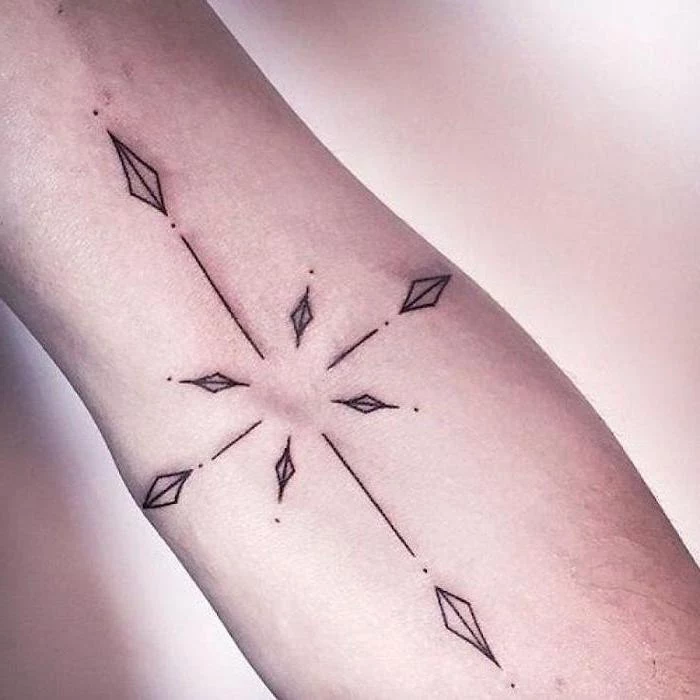
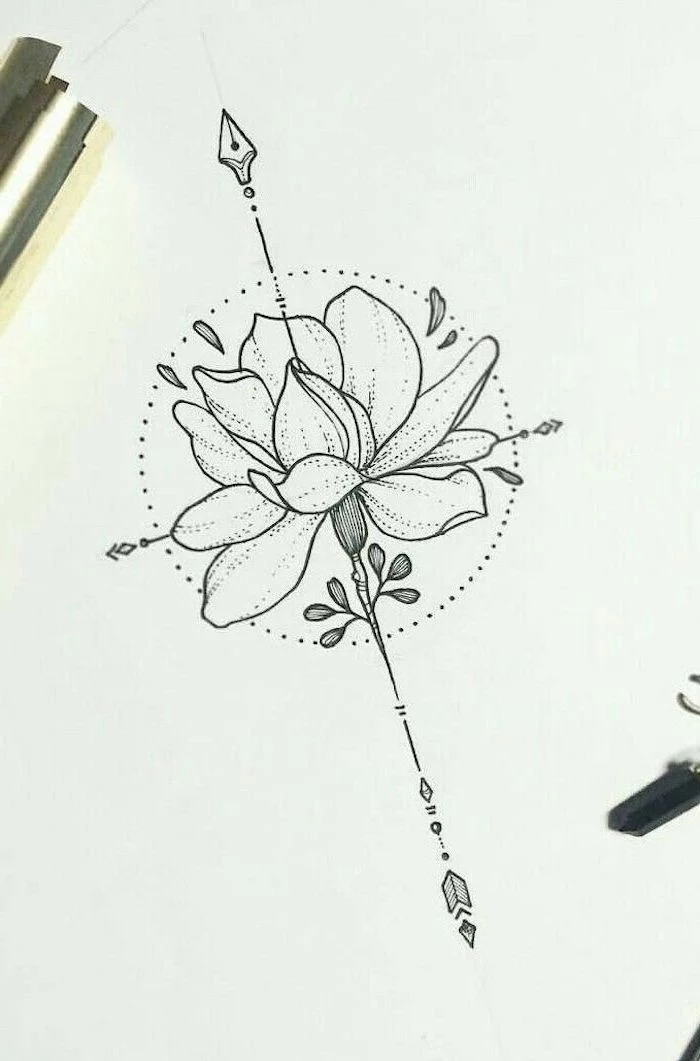
Thinking of combining your compass with a quote? Keep it concise. Long sentences can be difficult to read once tattooed and are more prone to blurring over time. Short phrases like
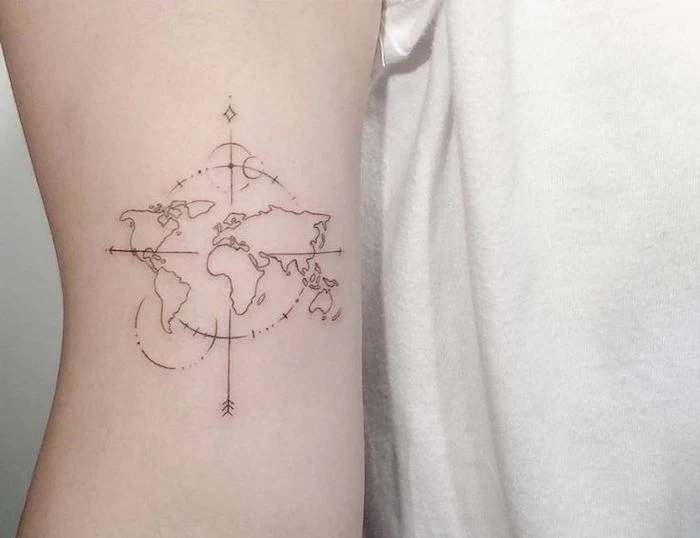
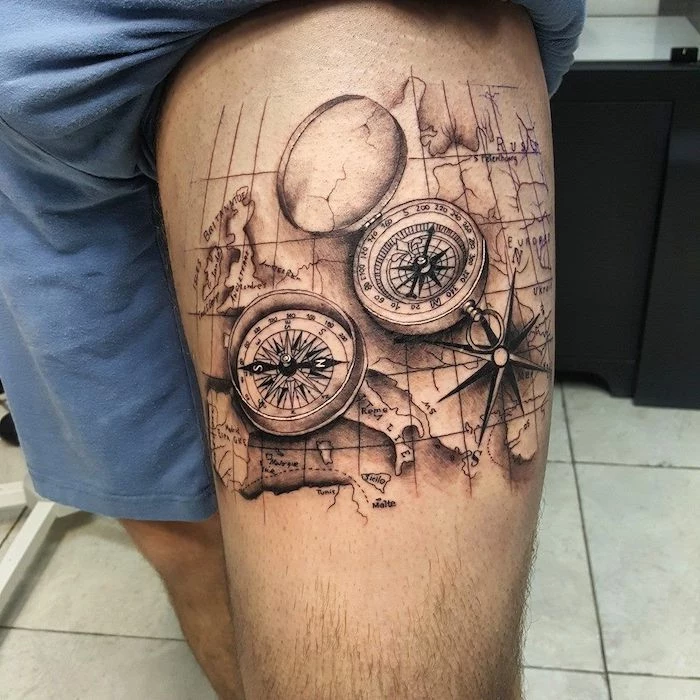
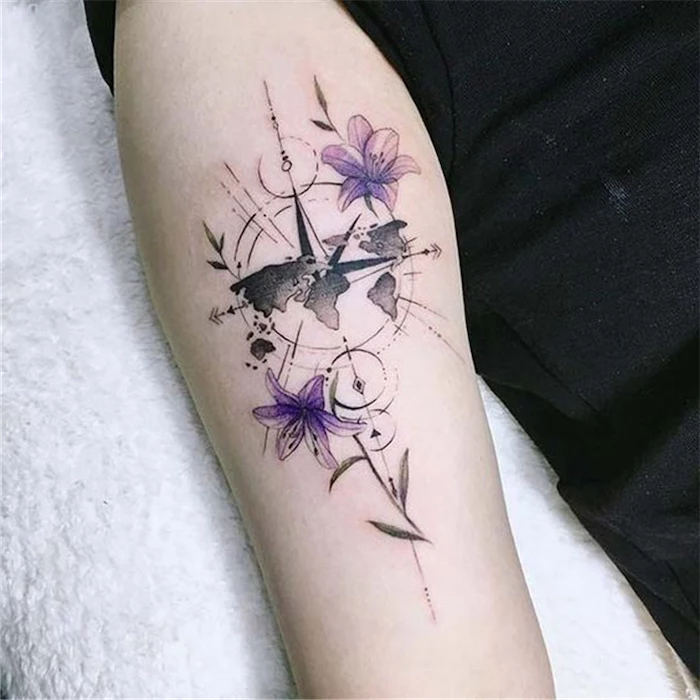
Did you know that some of the most sought-after tattoo inks, like Dynamic Black or Intenze Zuper Black, are prized by artists for their ability to stay dark and sharp over time?
When you’re looking at an artist’s portfolio, you’re not just seeing their skill with a needle, but also their choice in materials. A quality ink is crucial for a compass tattoo, where the contrast between crisp black lines and clear skin is everything.
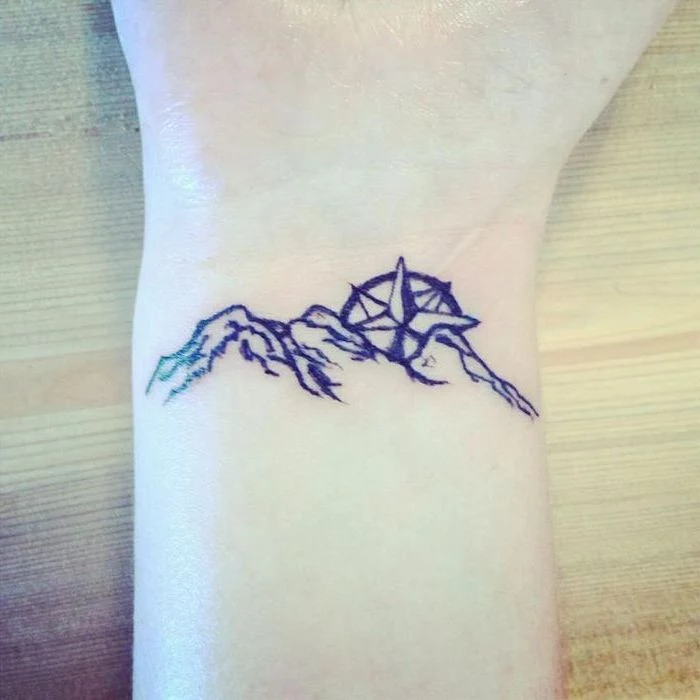
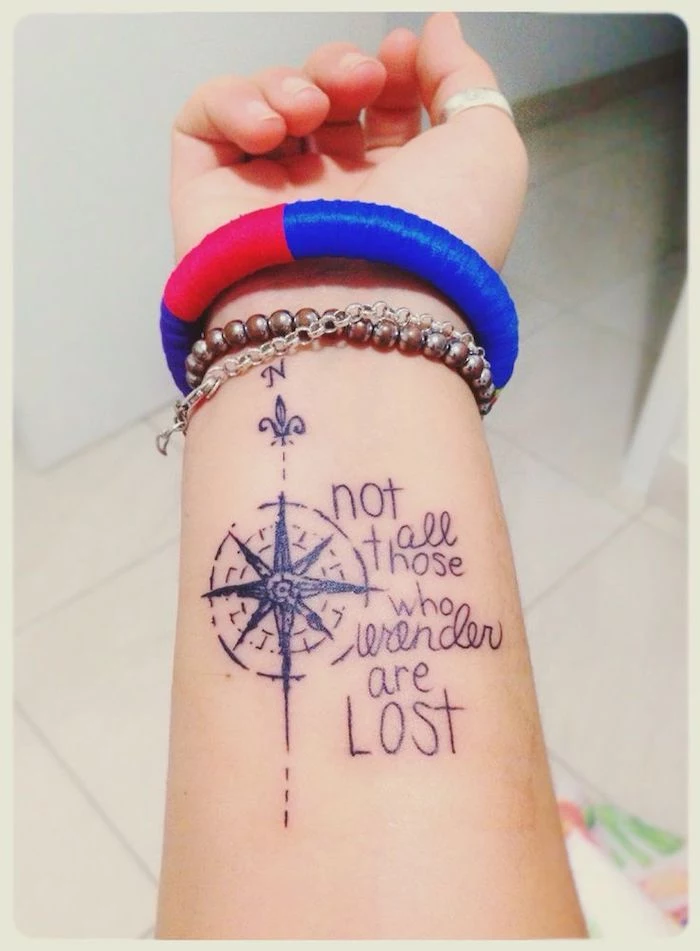
Black & Greywash: This is the classic, timeless choice. Using diluted black ink, an artist can create soft, smooth shadows and gradients that give the compass depth and a three-dimensional feel. It ages exceptionally well.
Full Color: Offers a vibrant, expressive alternative. Sunsets, nebulae, or watercolor splashes can be integrated into the background. It requires an artist skilled in color theory and packing, and needs strict sun protection to stay bright.
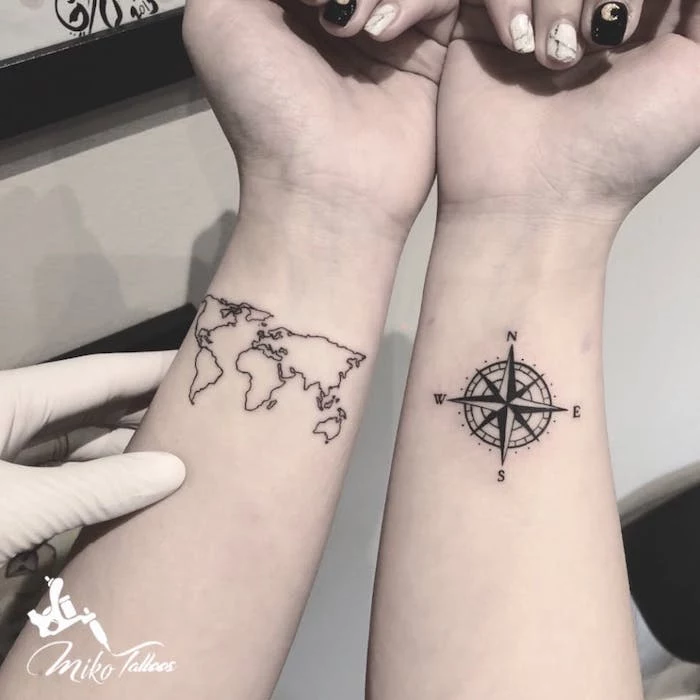
While a compass often symbolizes a physical journey, for many, it represents an internal one. It can commemorate overcoming a difficult period, a commitment to a new career path, or a reminder to stay true to one’s own values in a confusing world. This deeper meaning is what transforms a simple drawing into a powerful, personal talisman.

